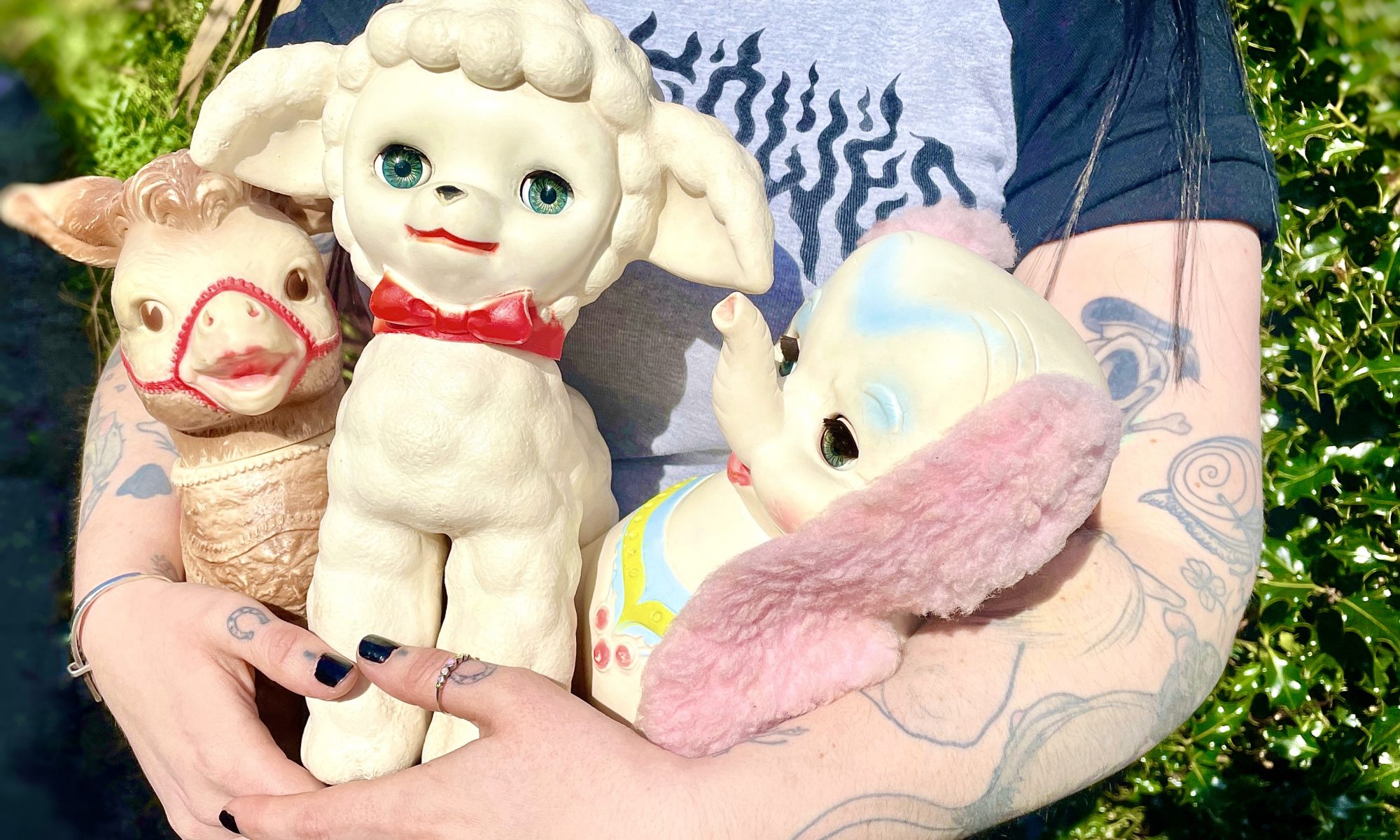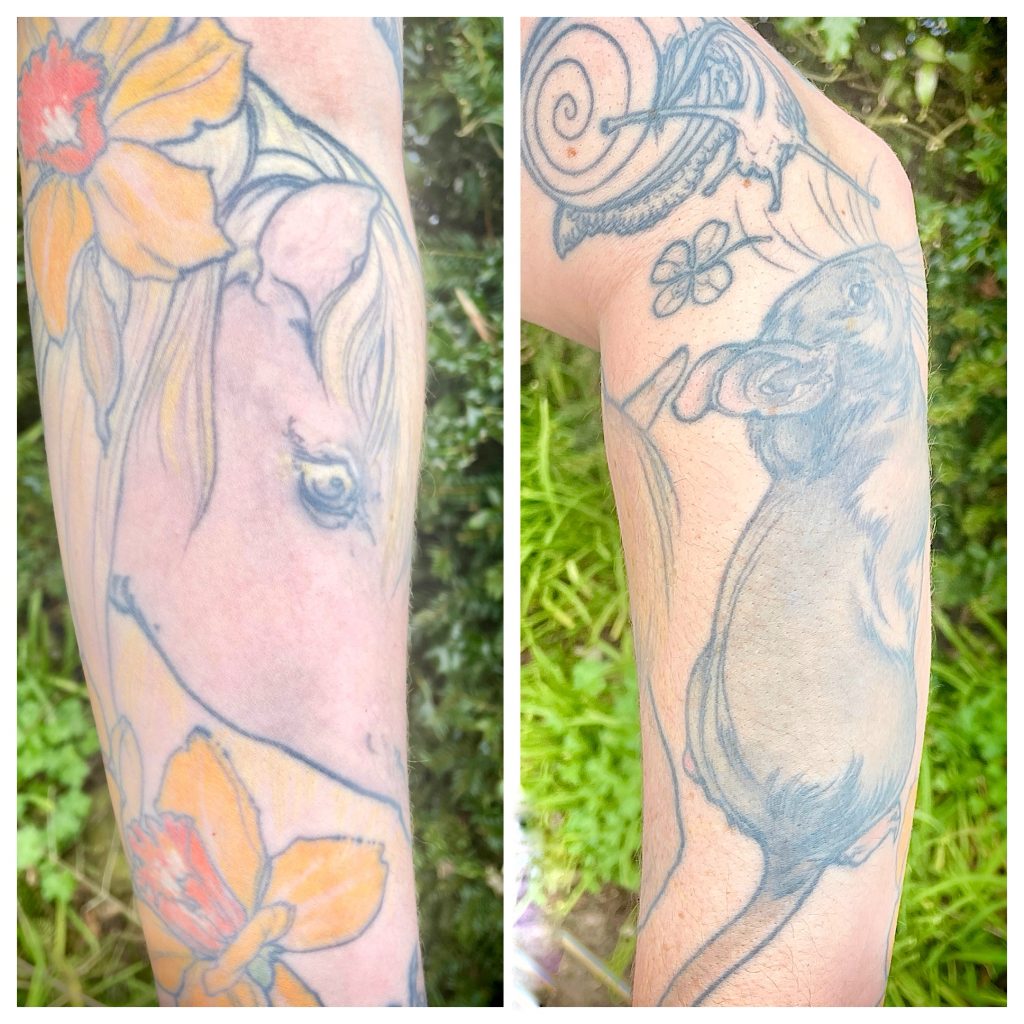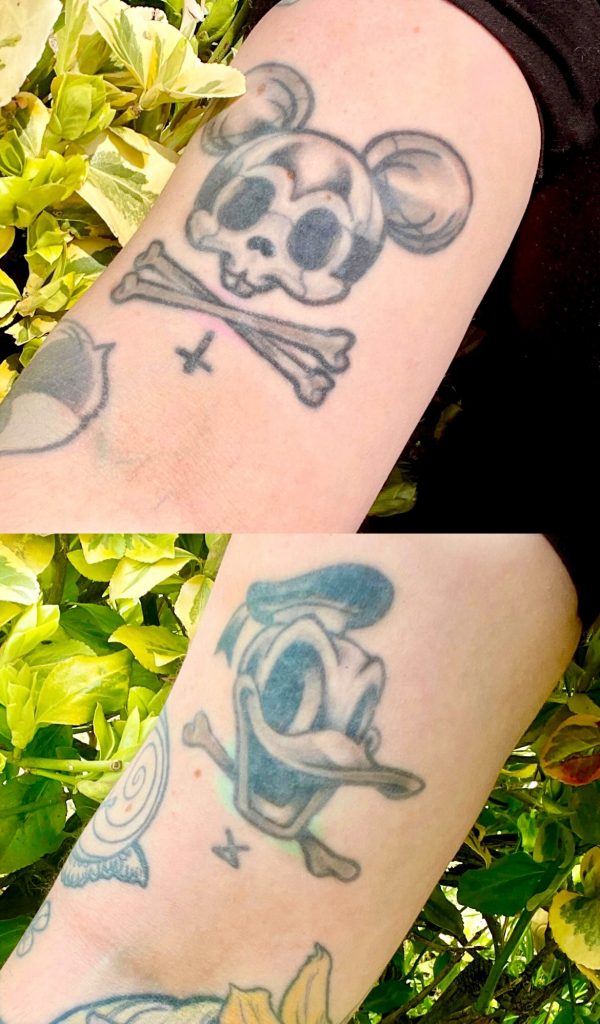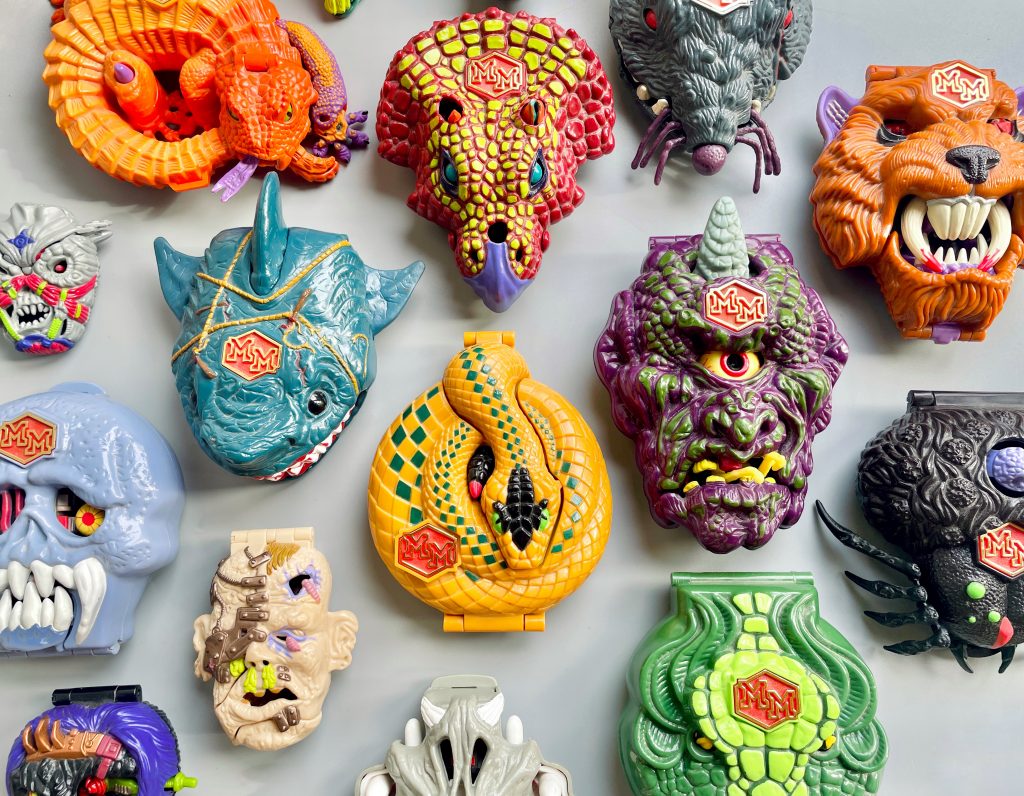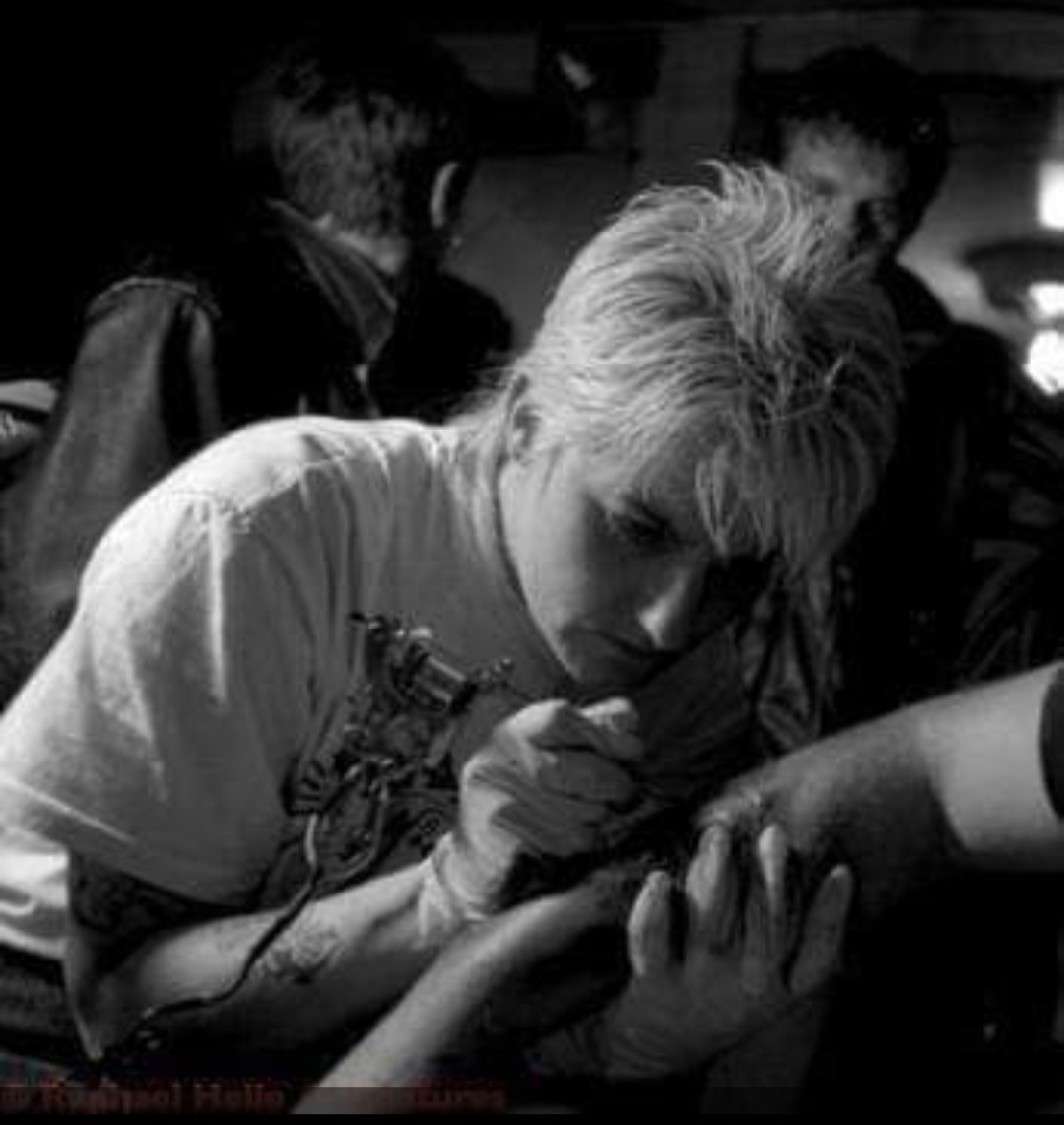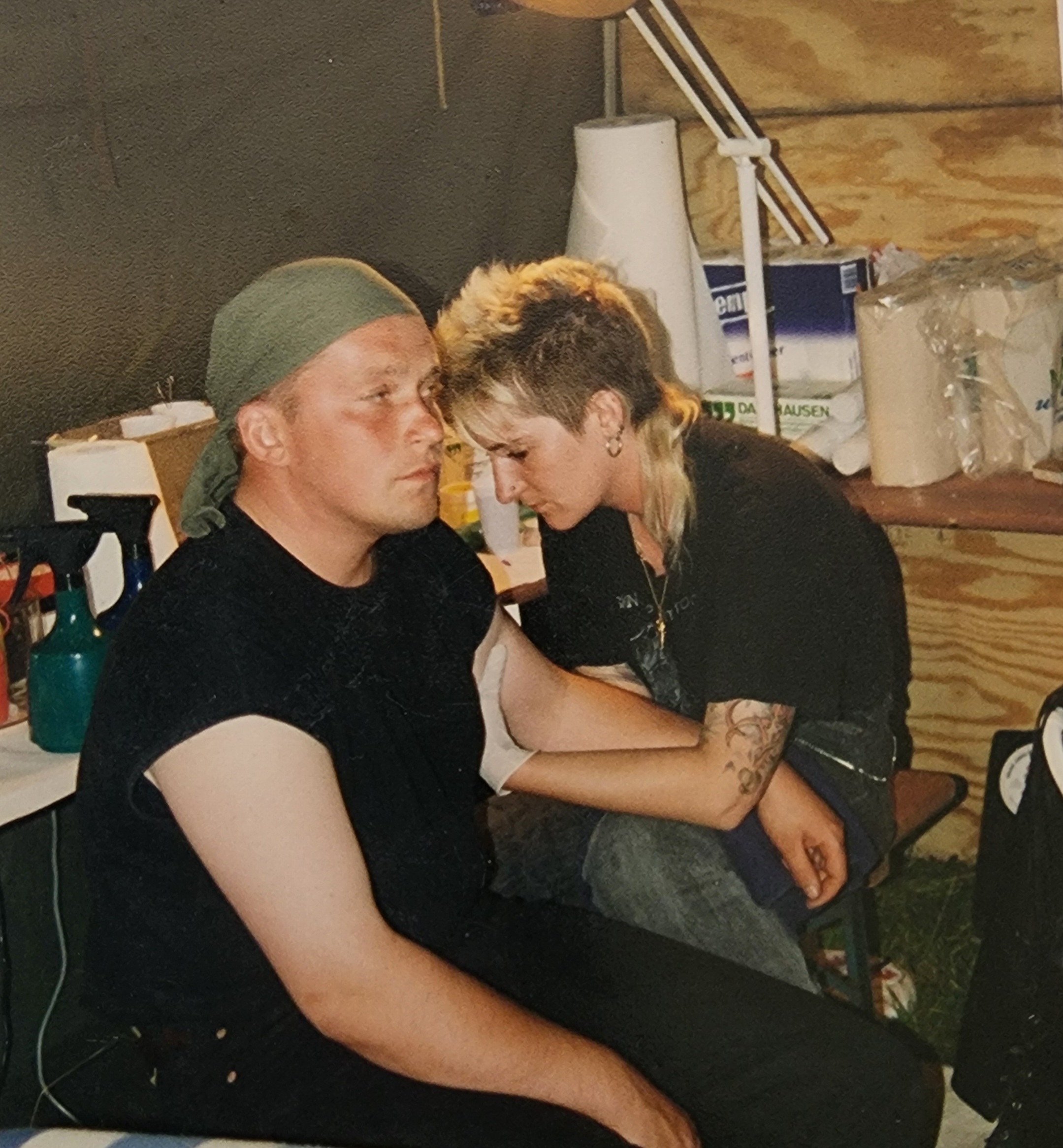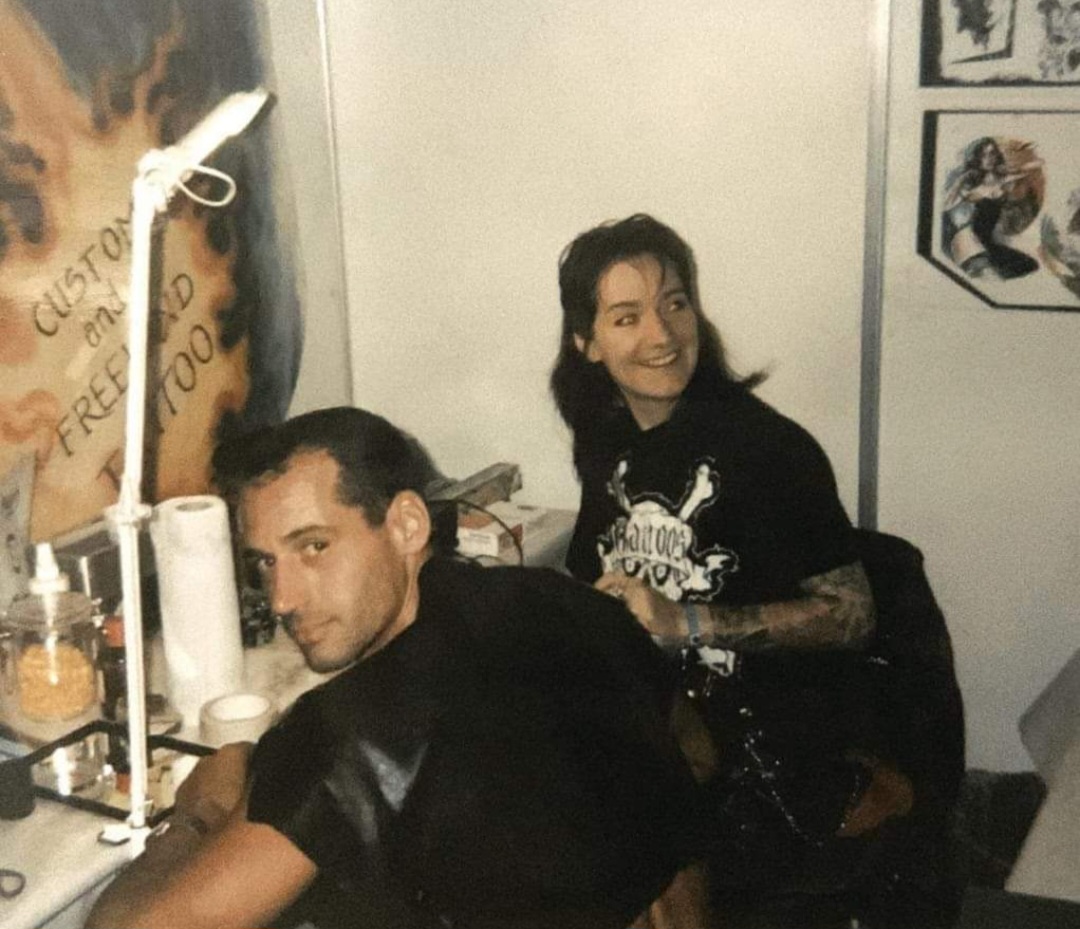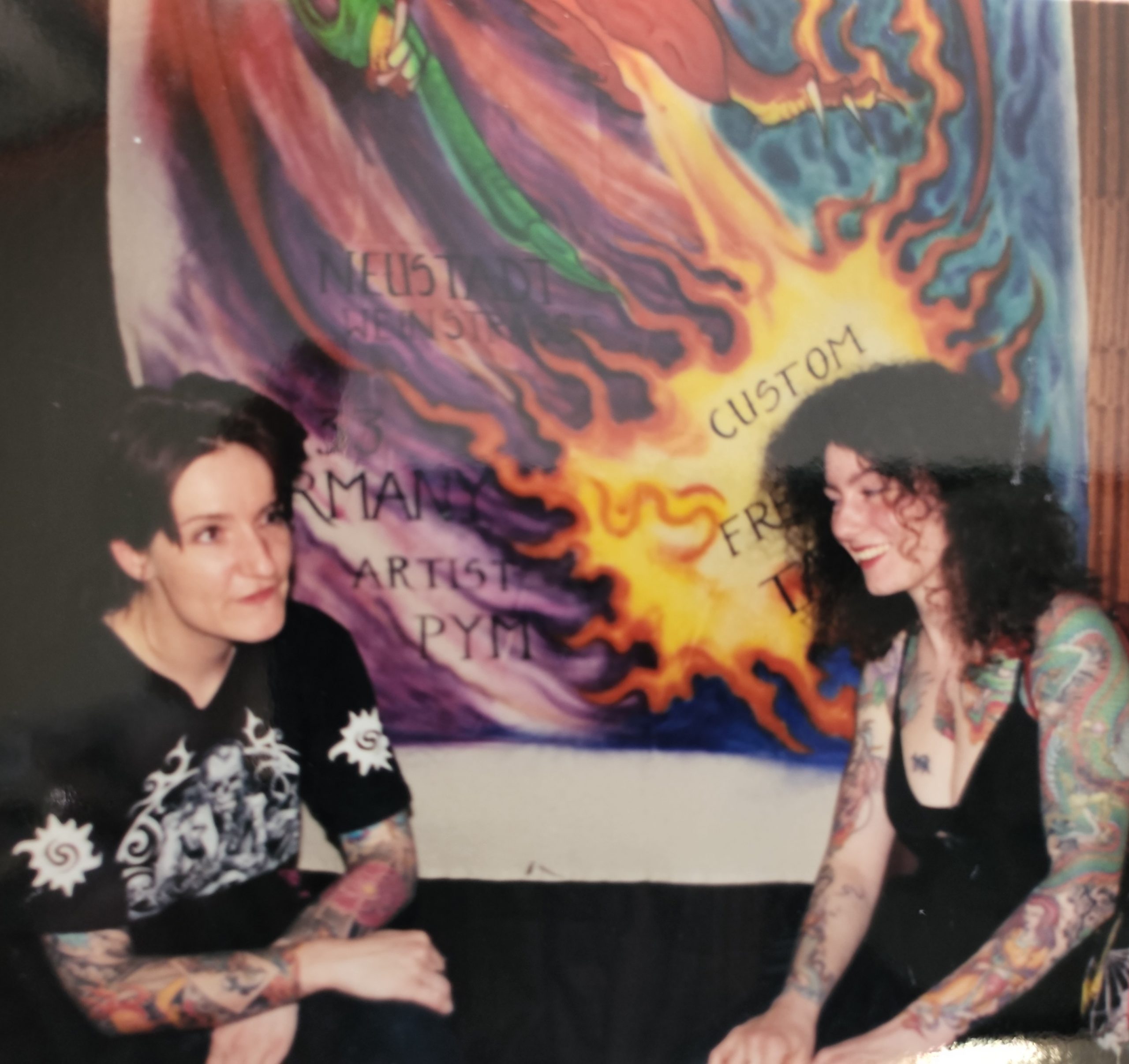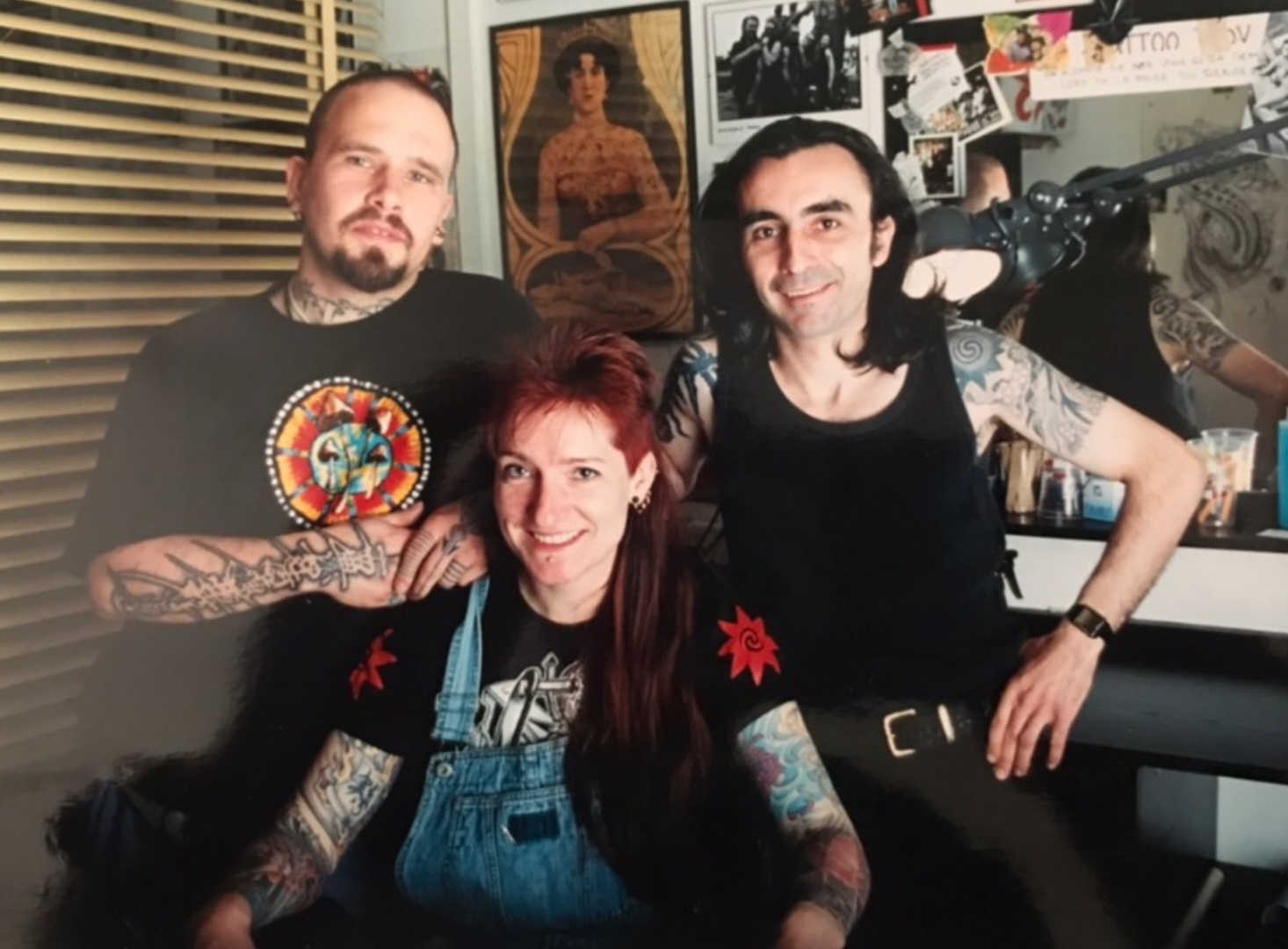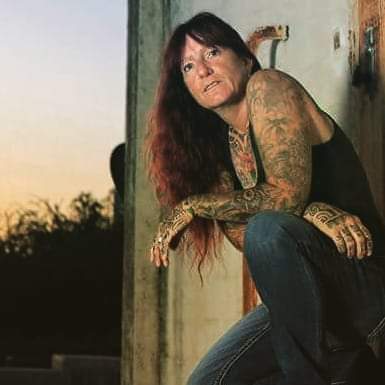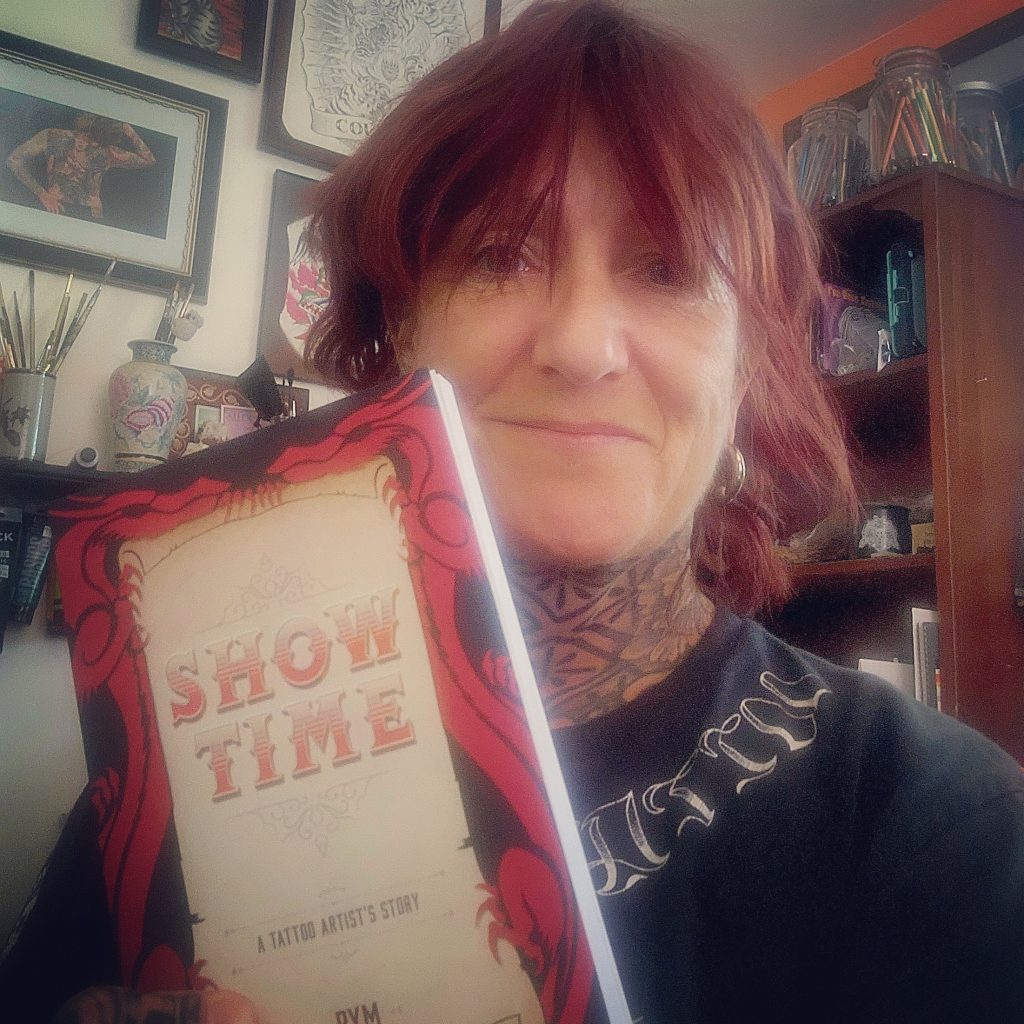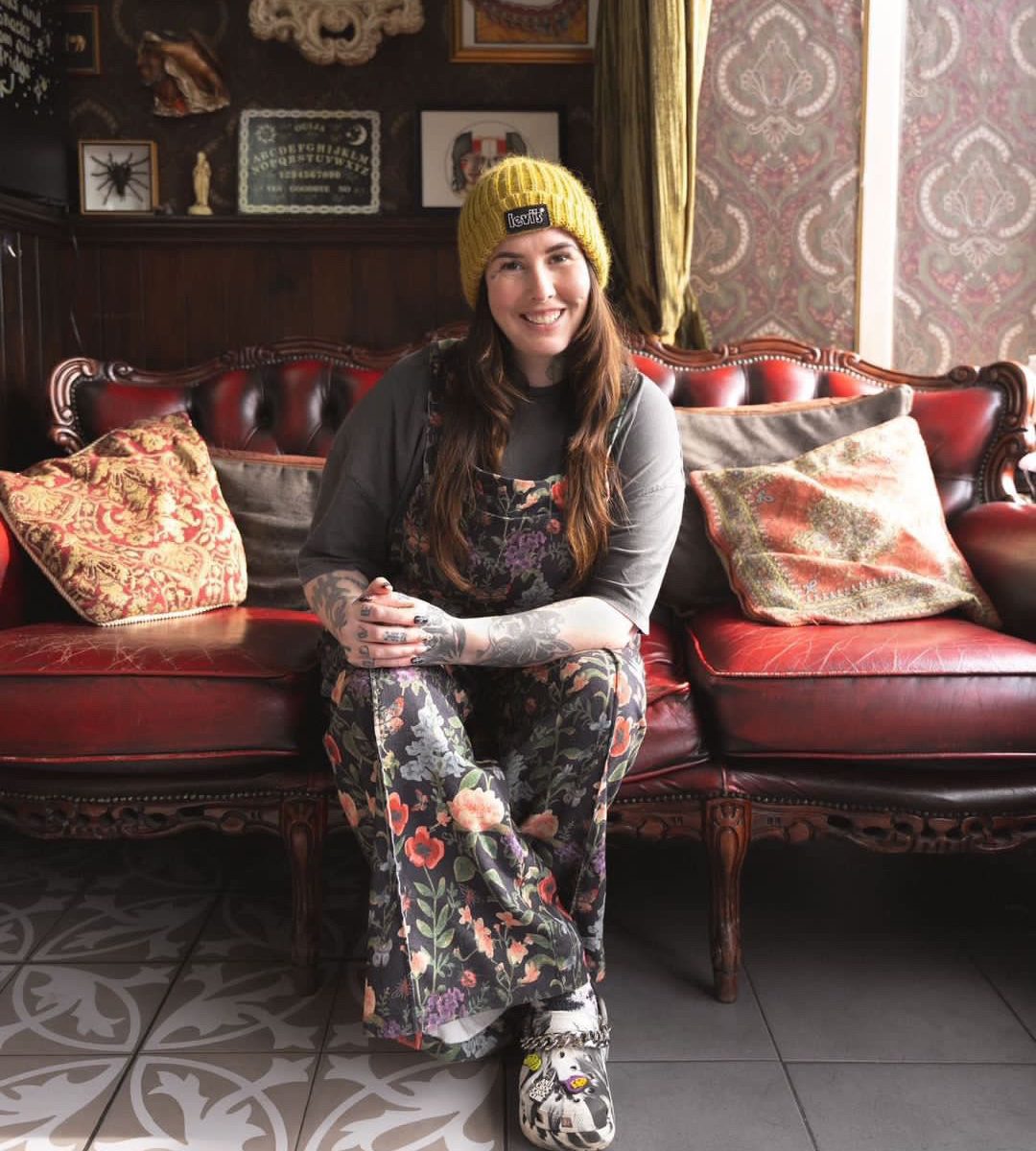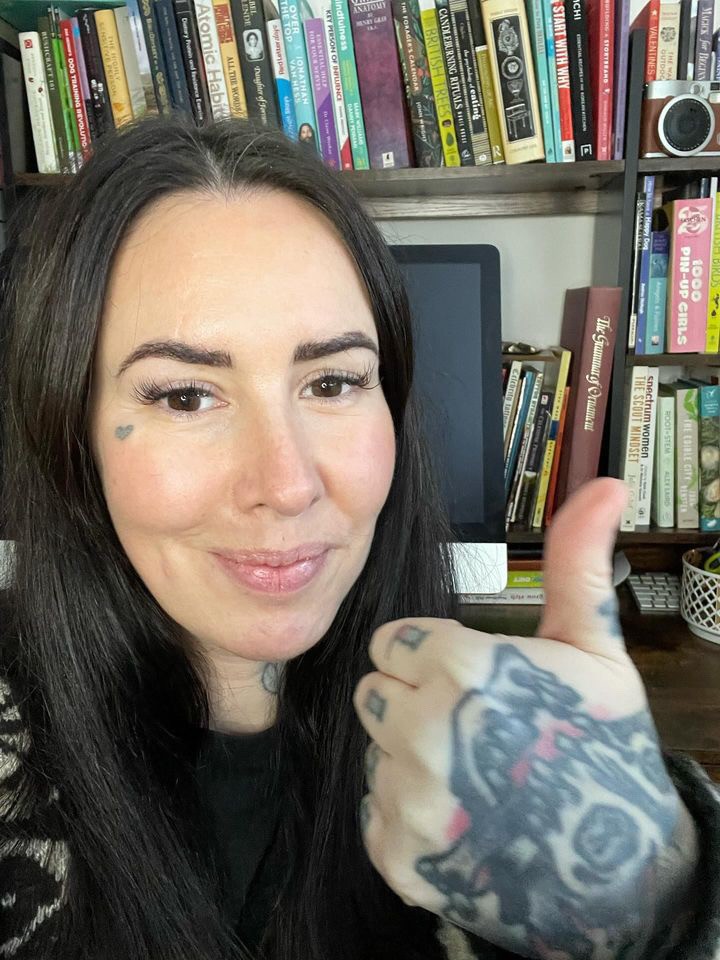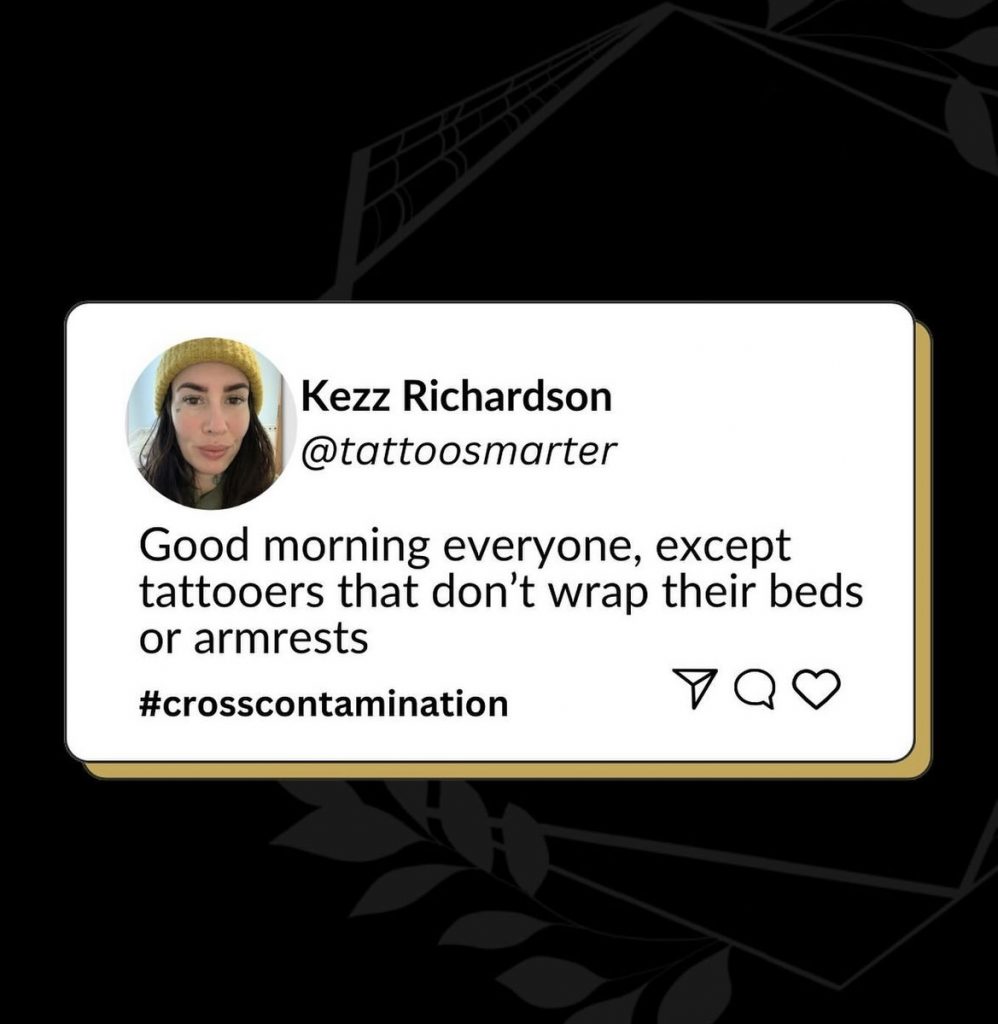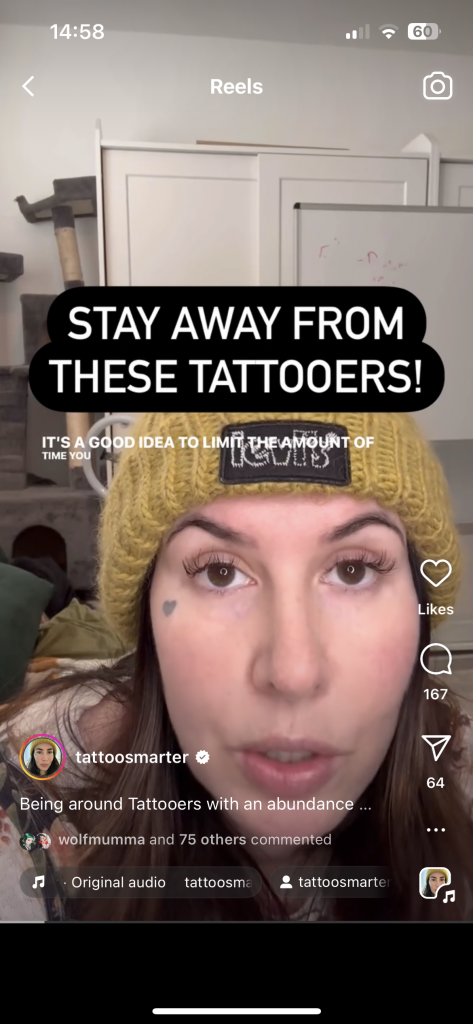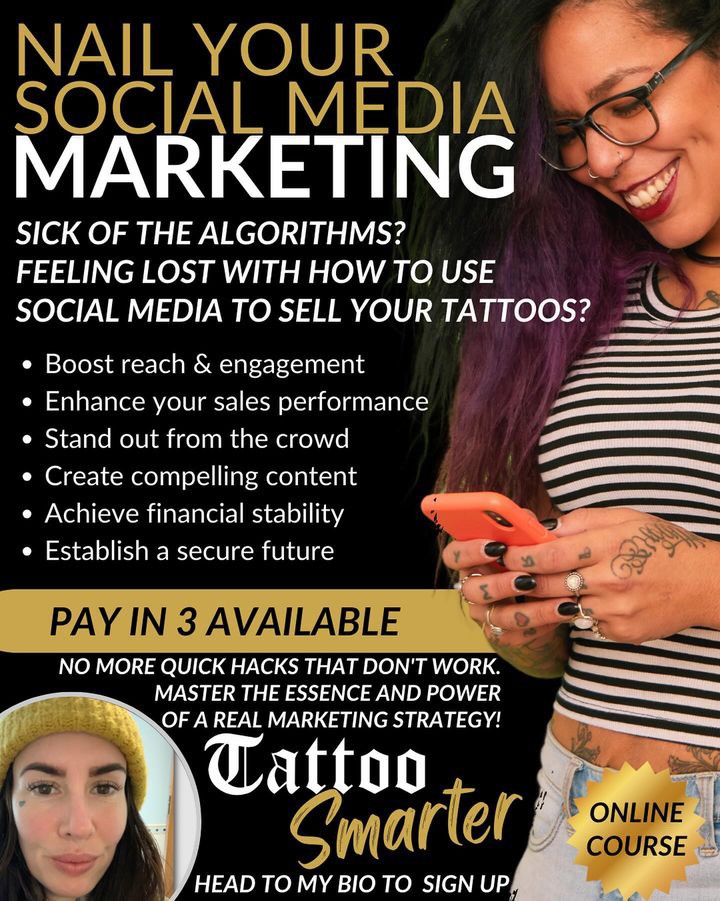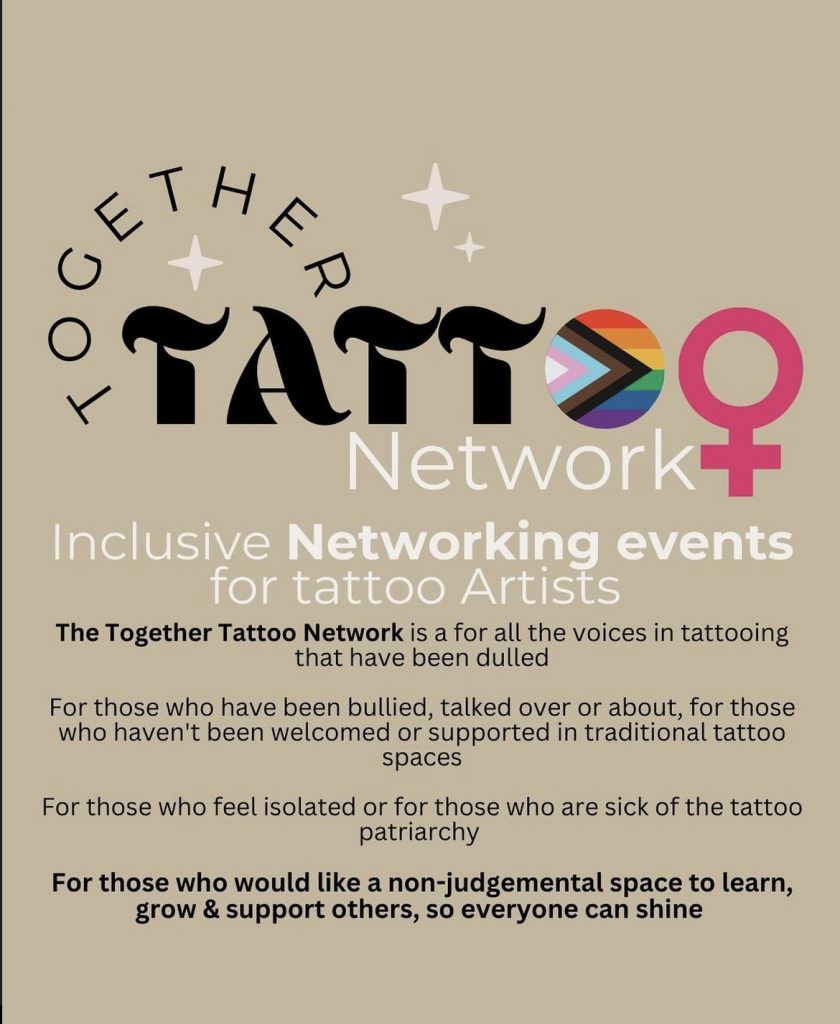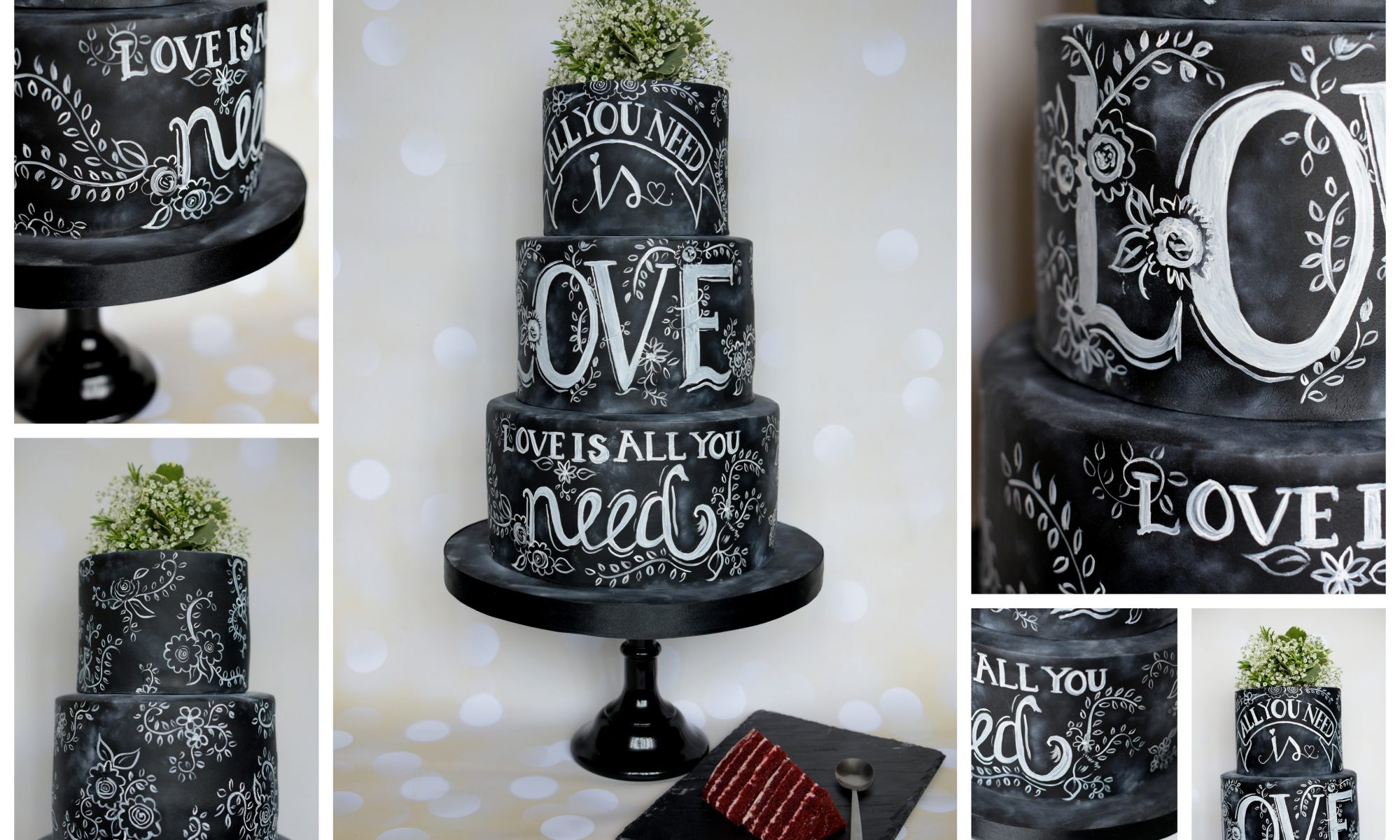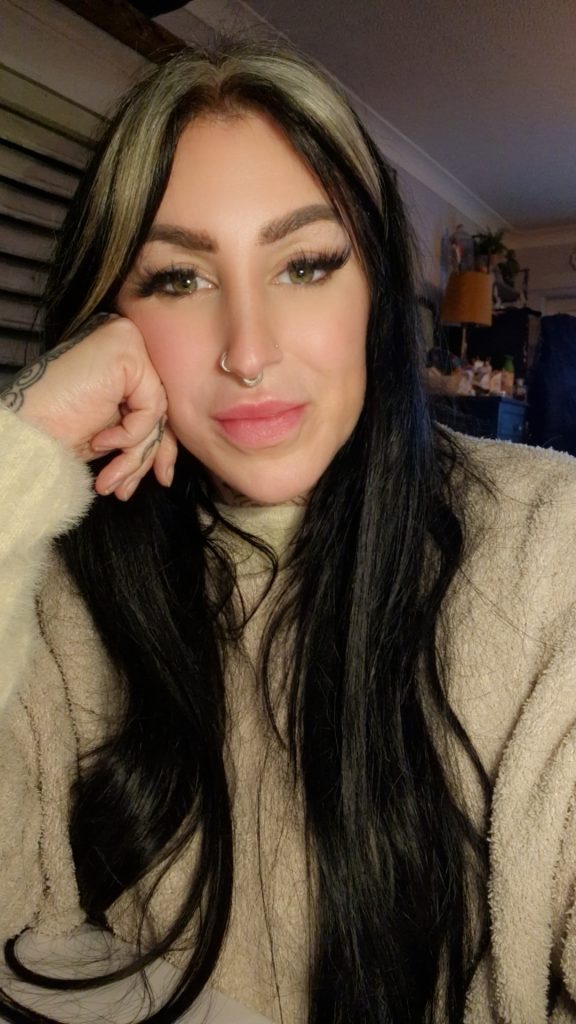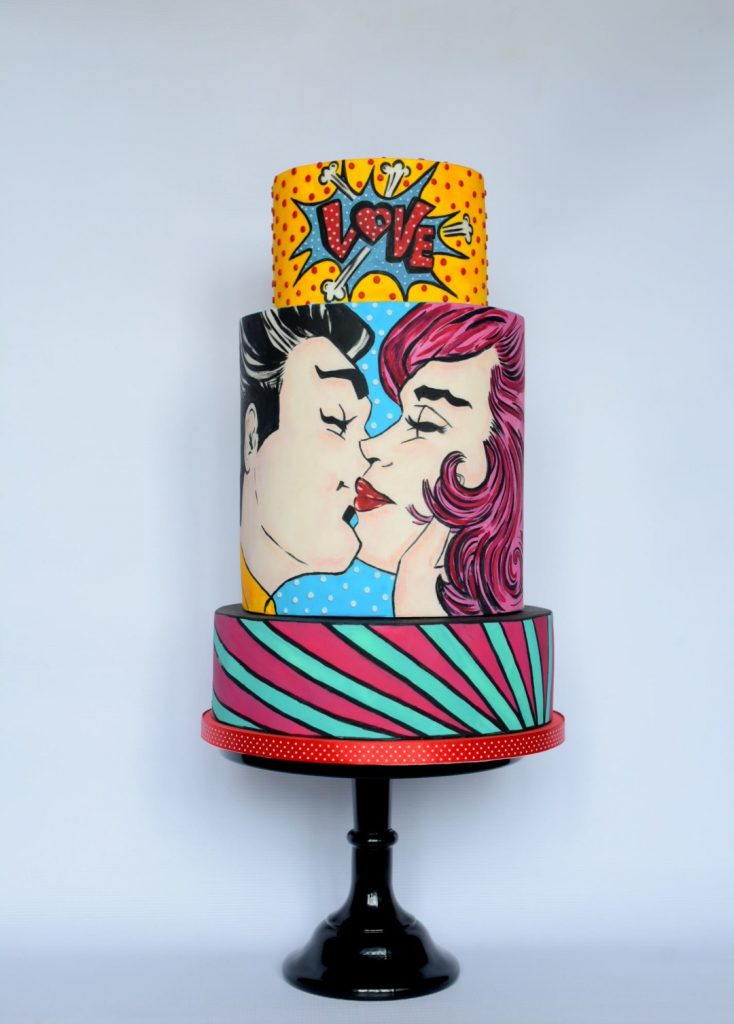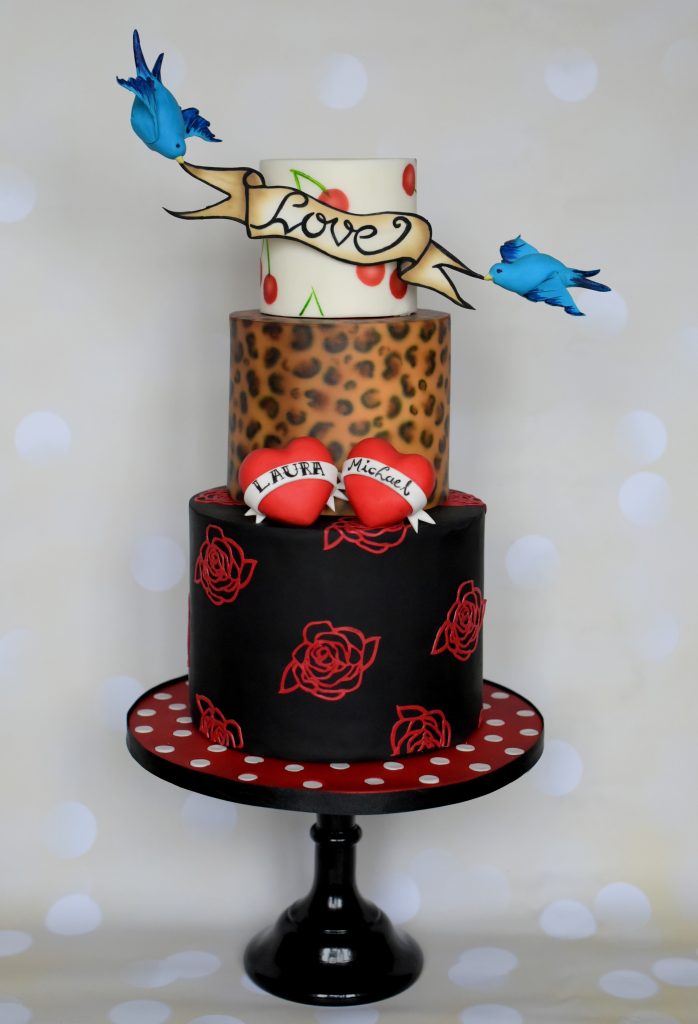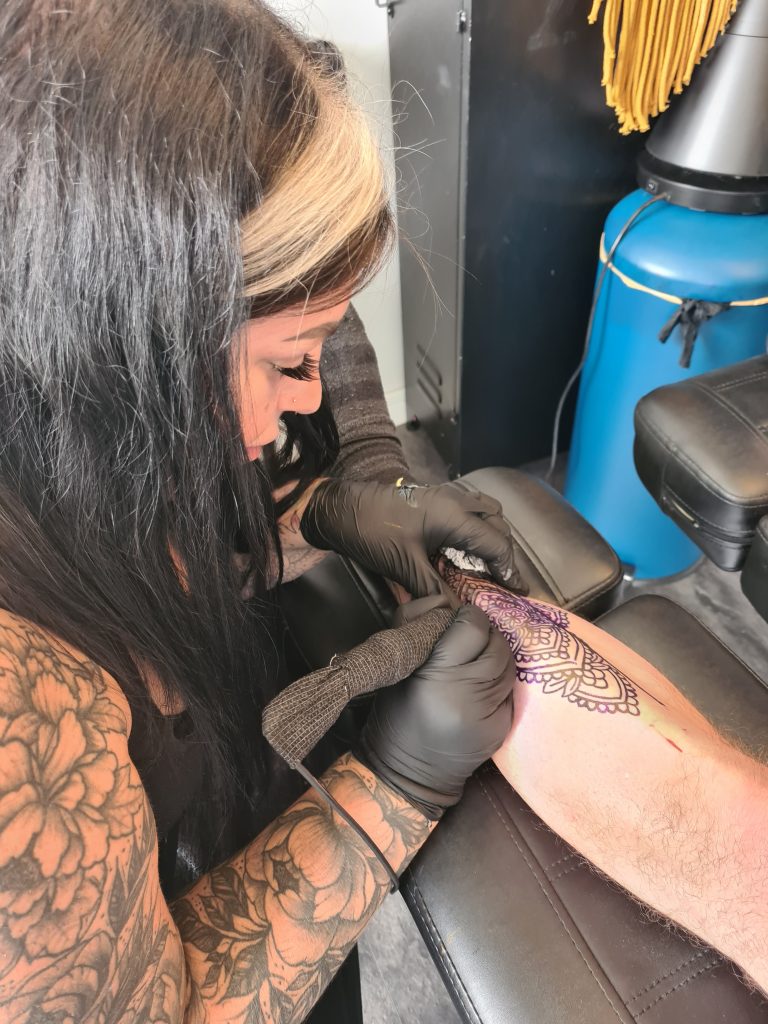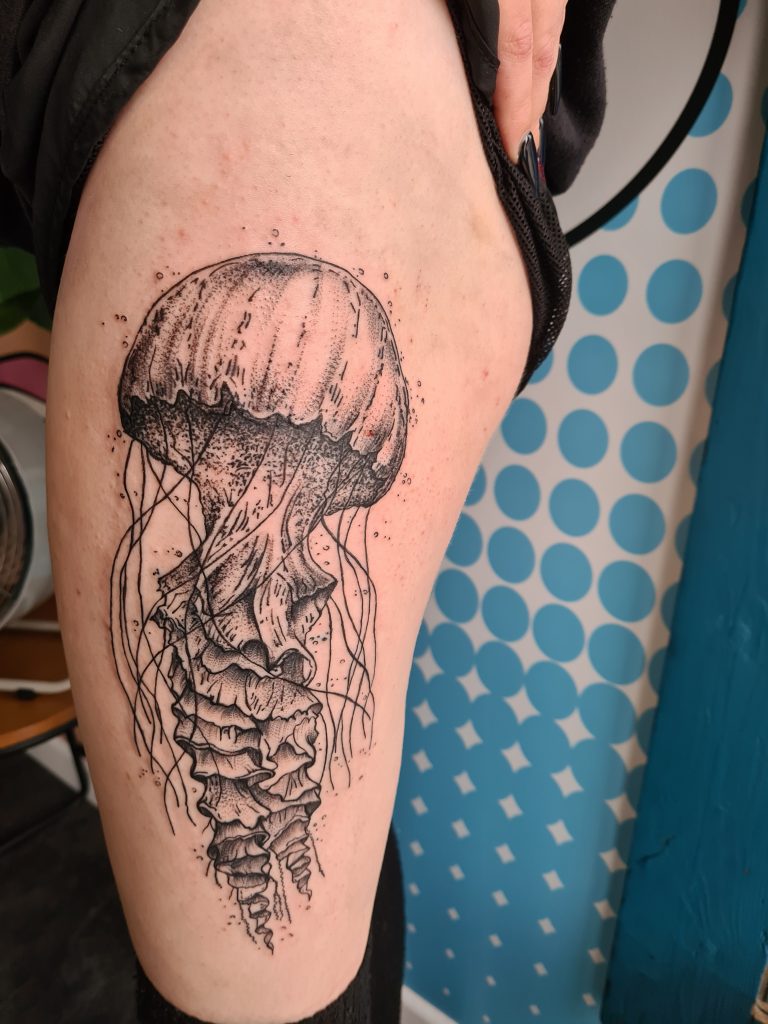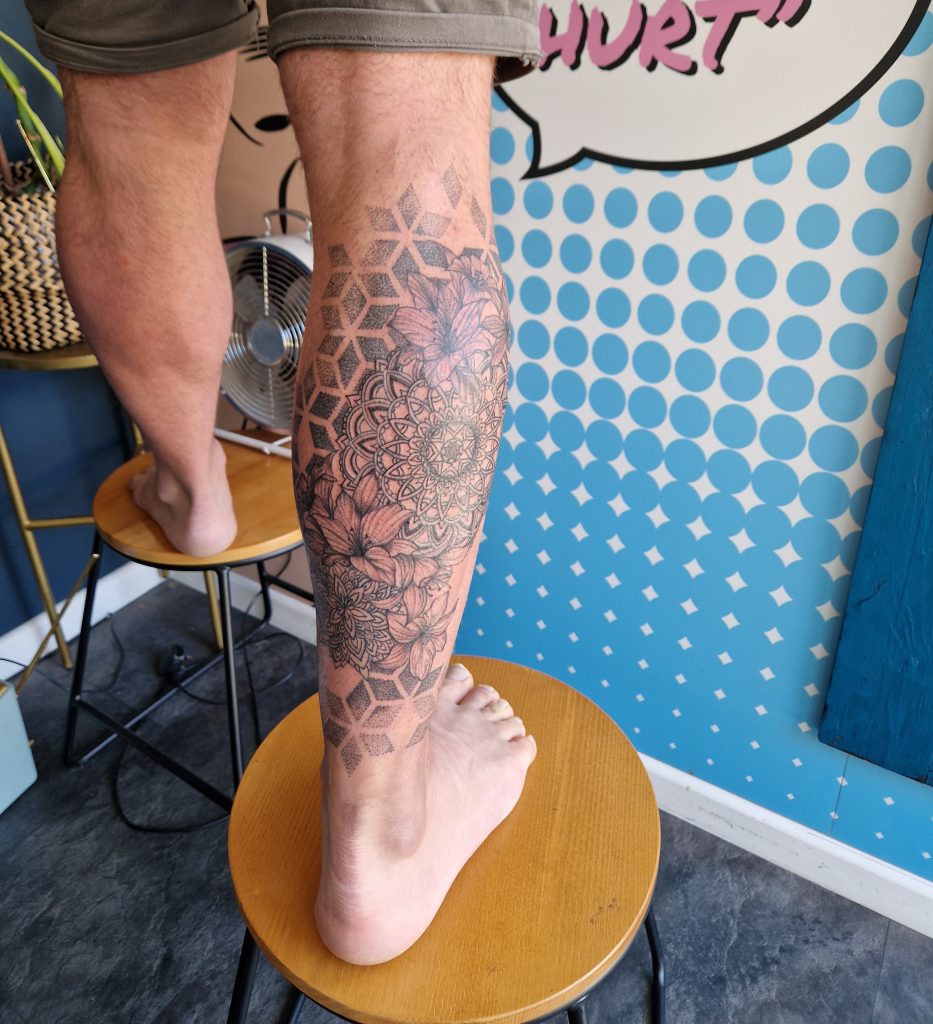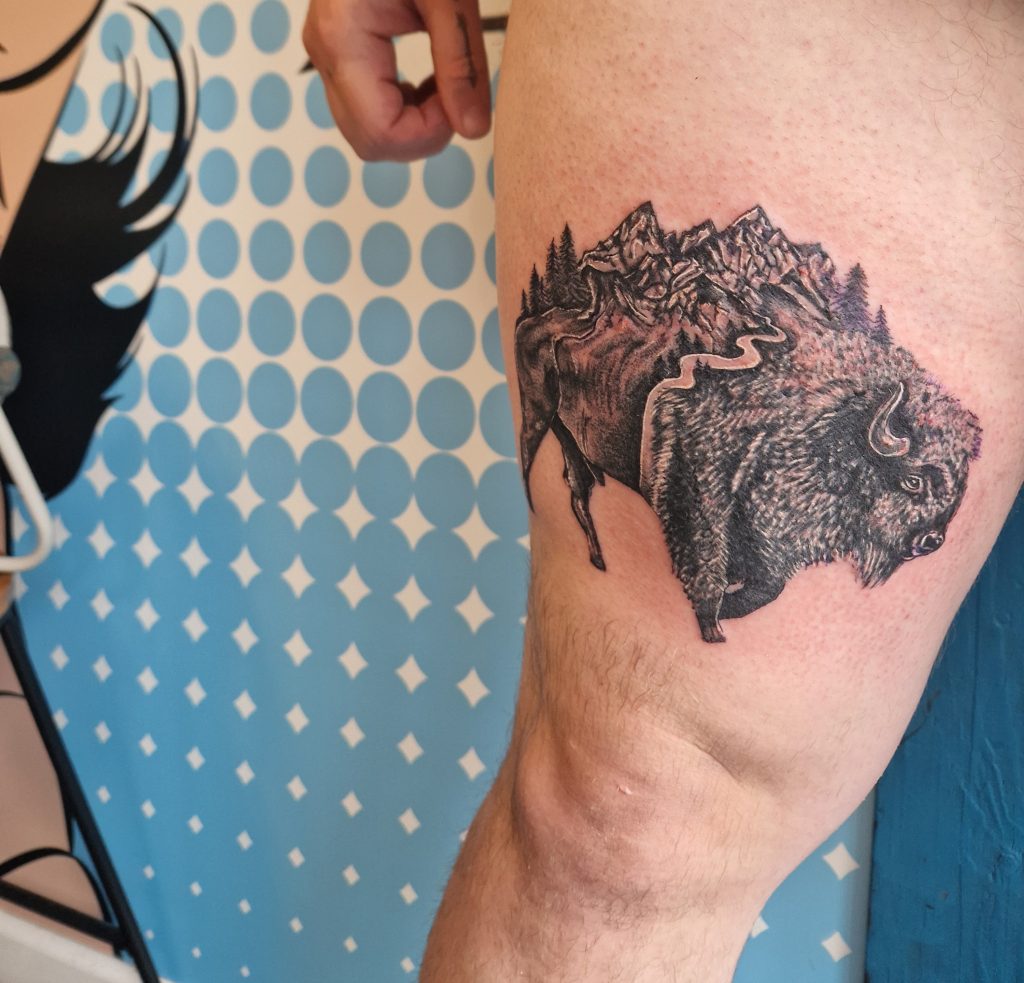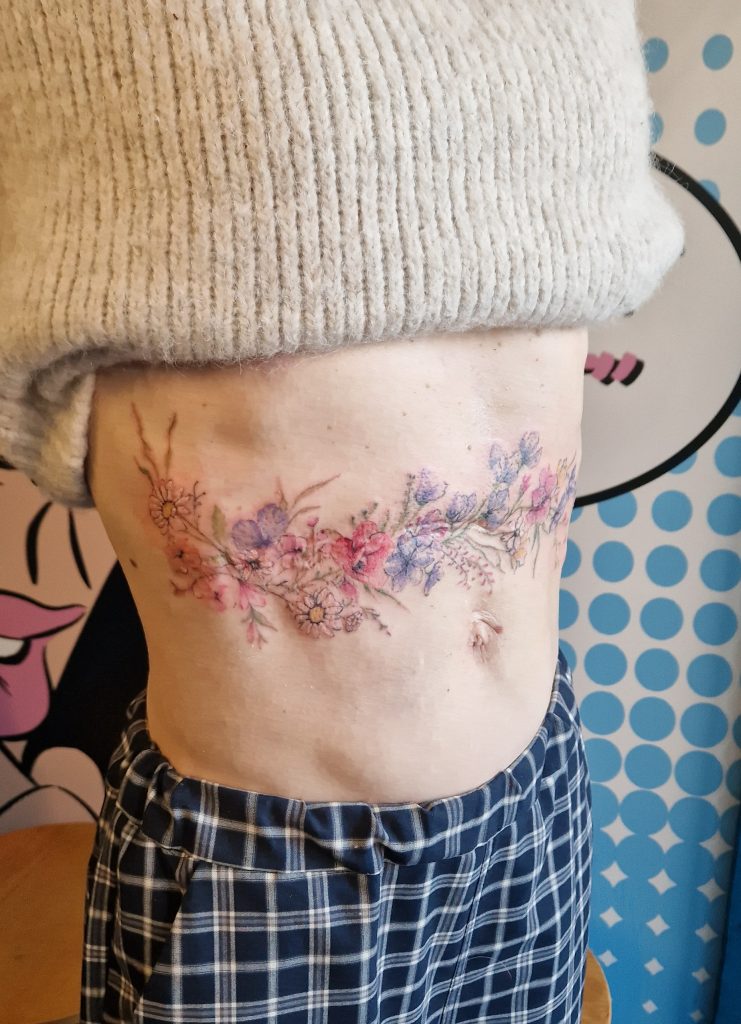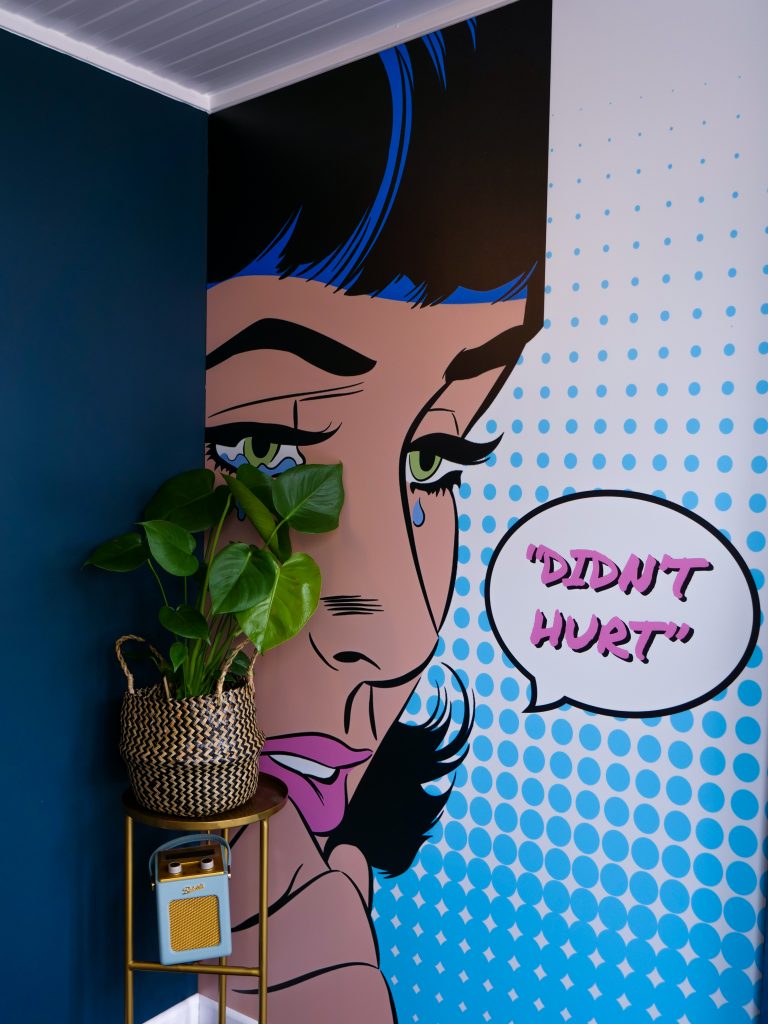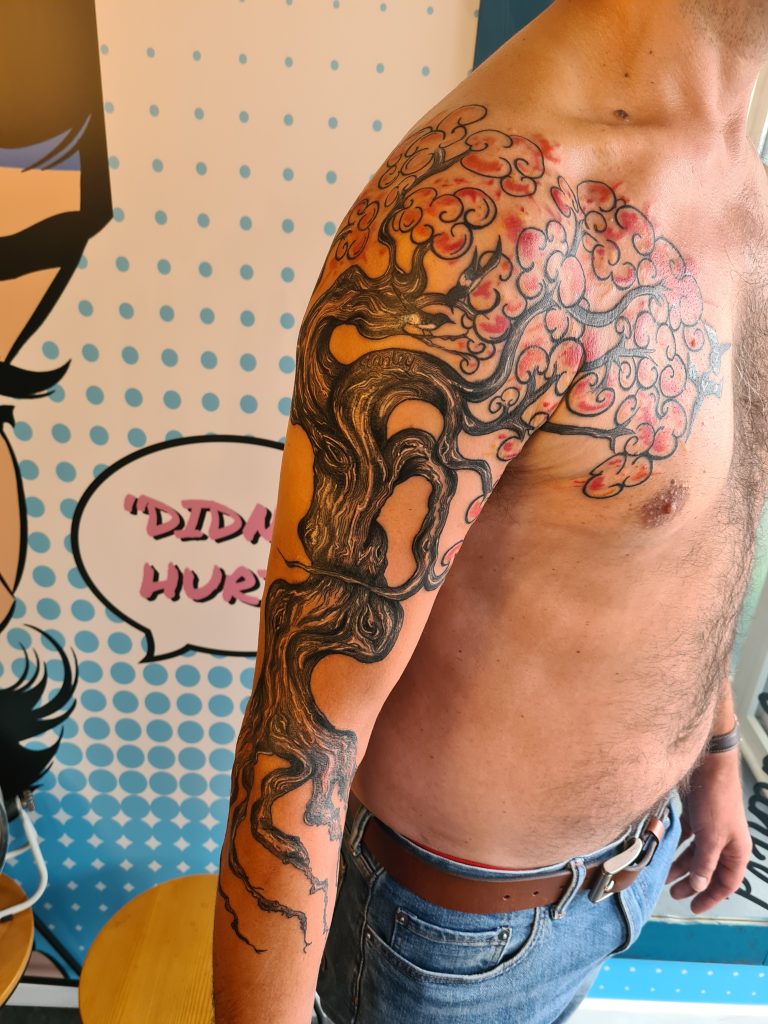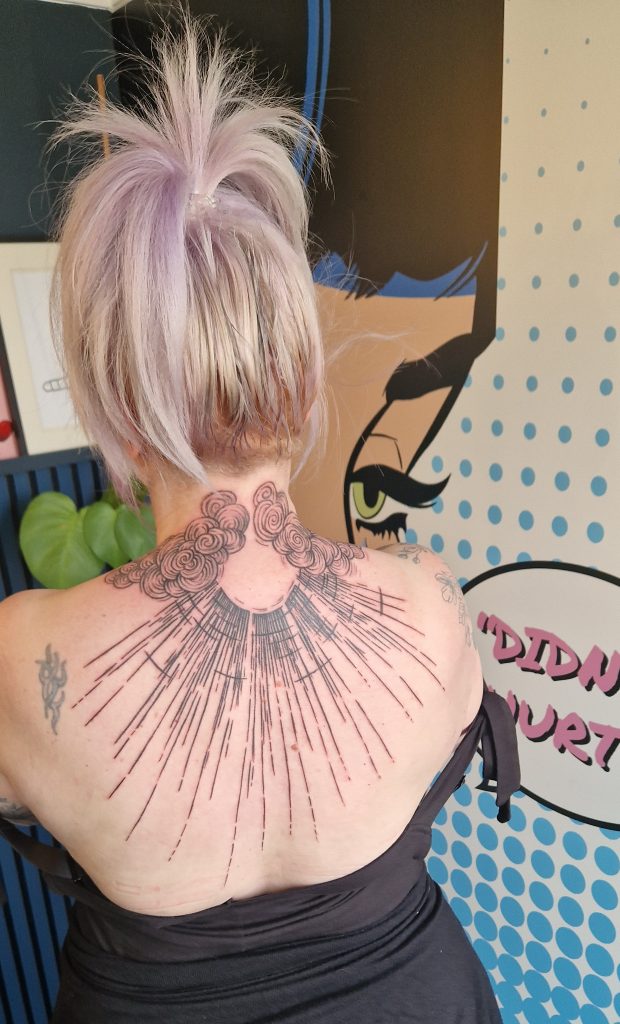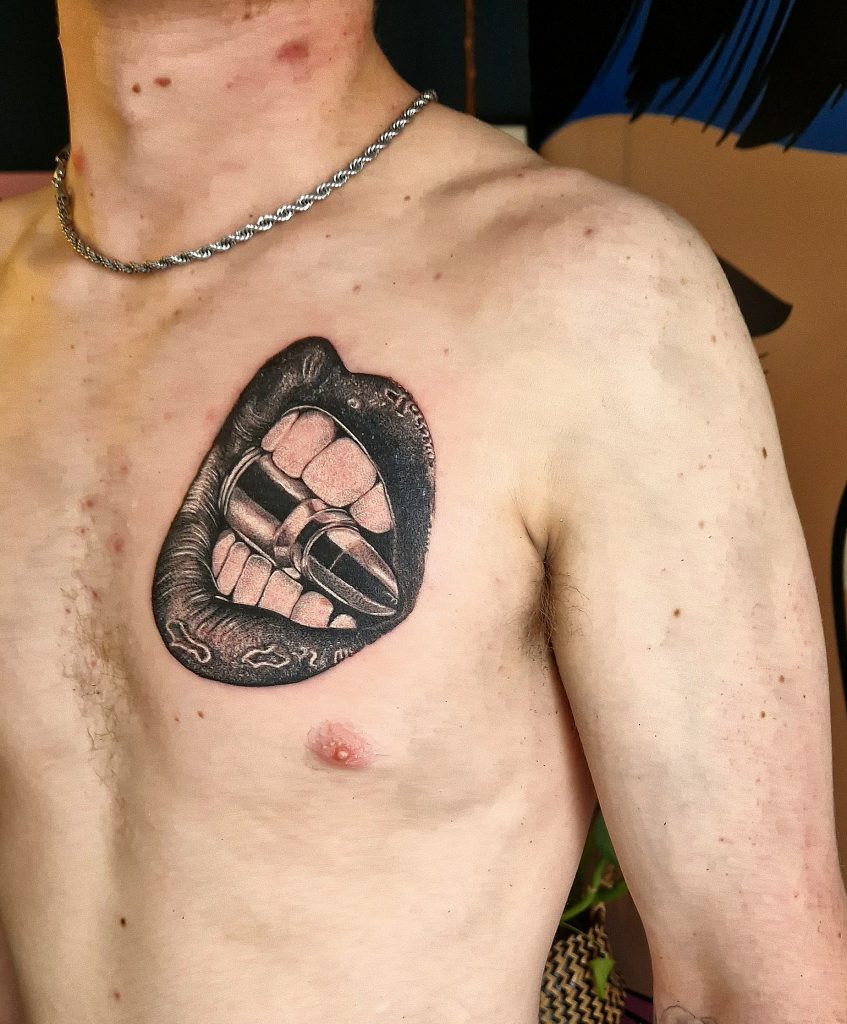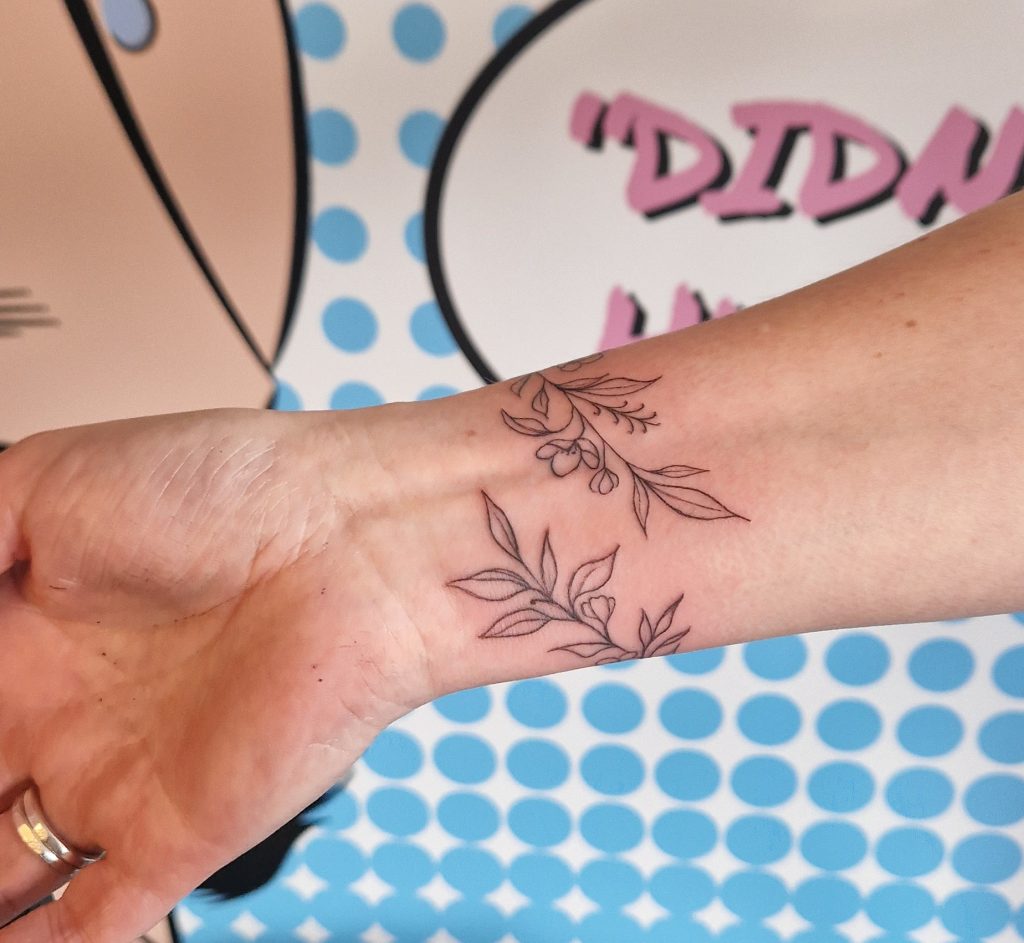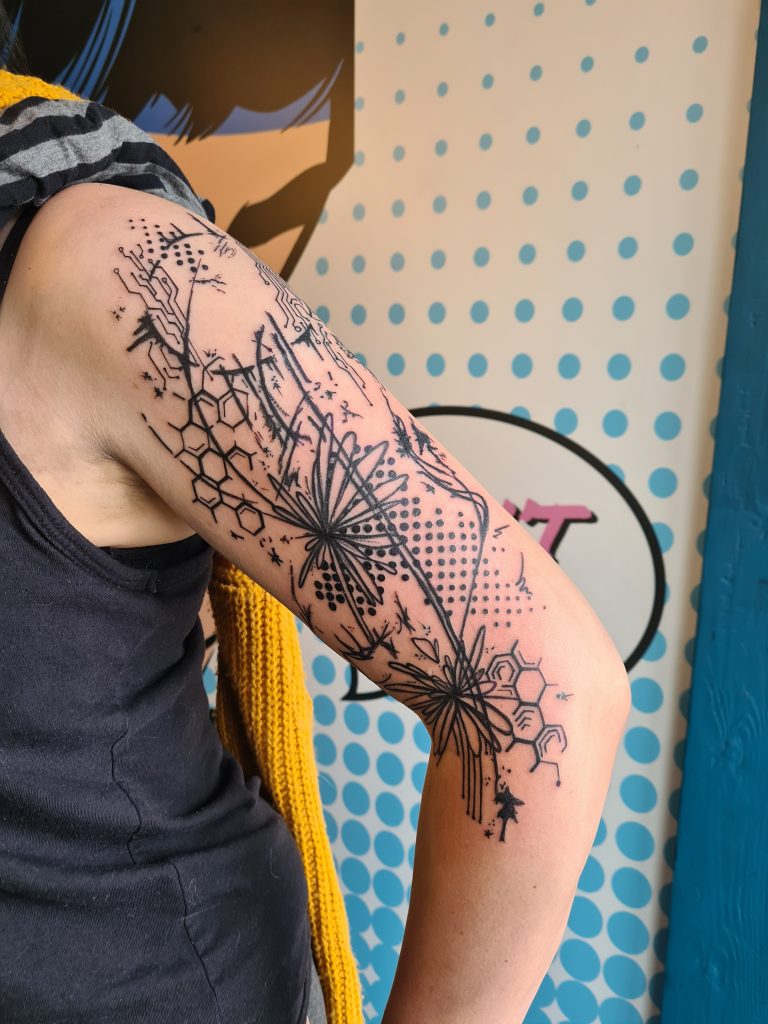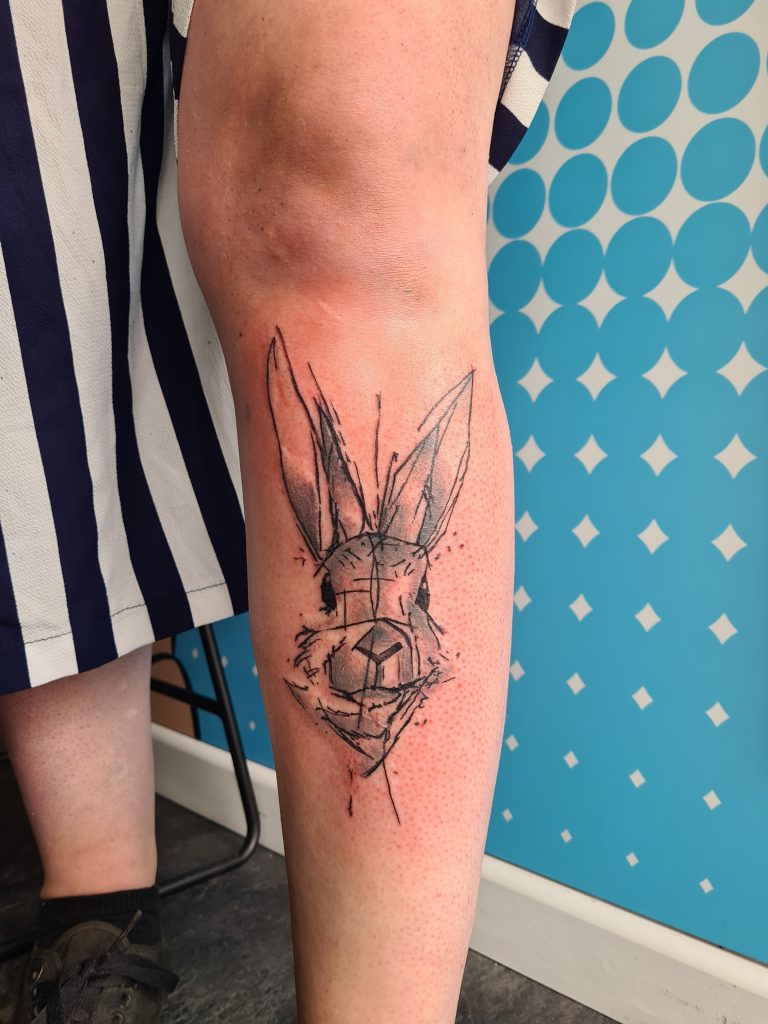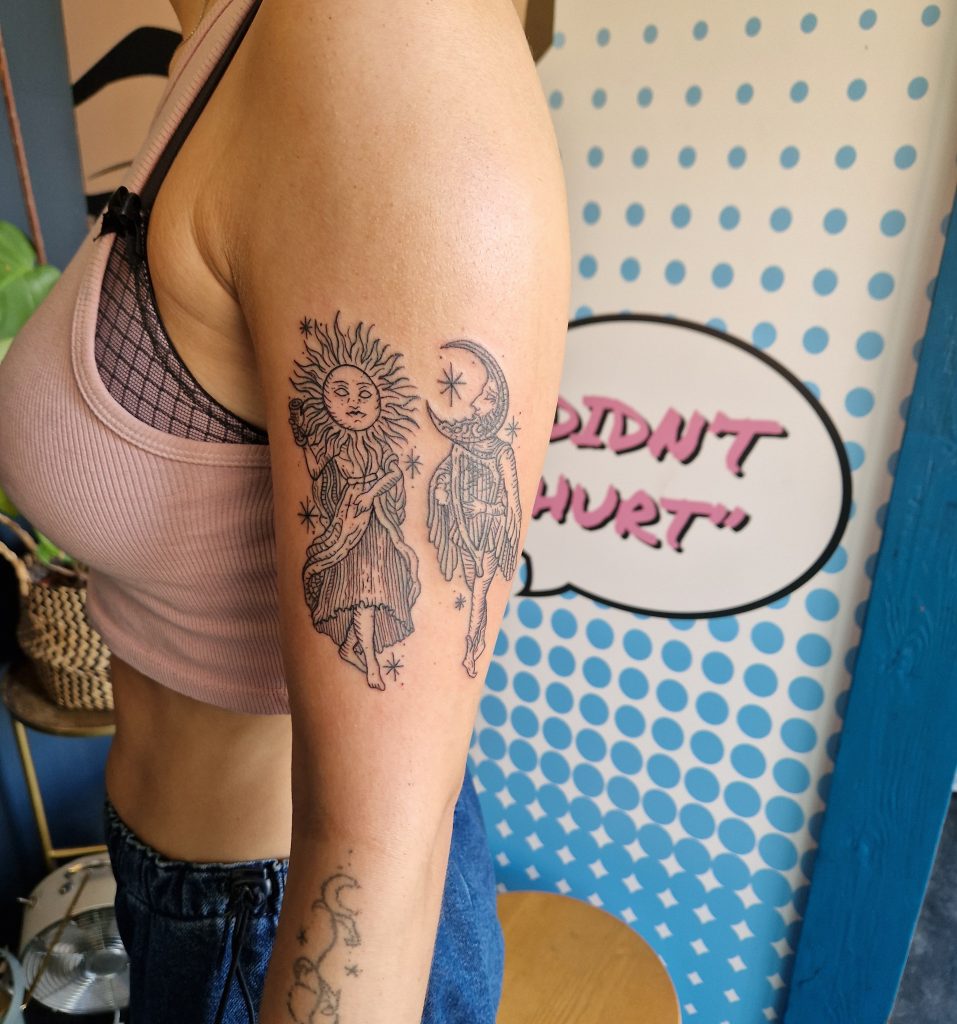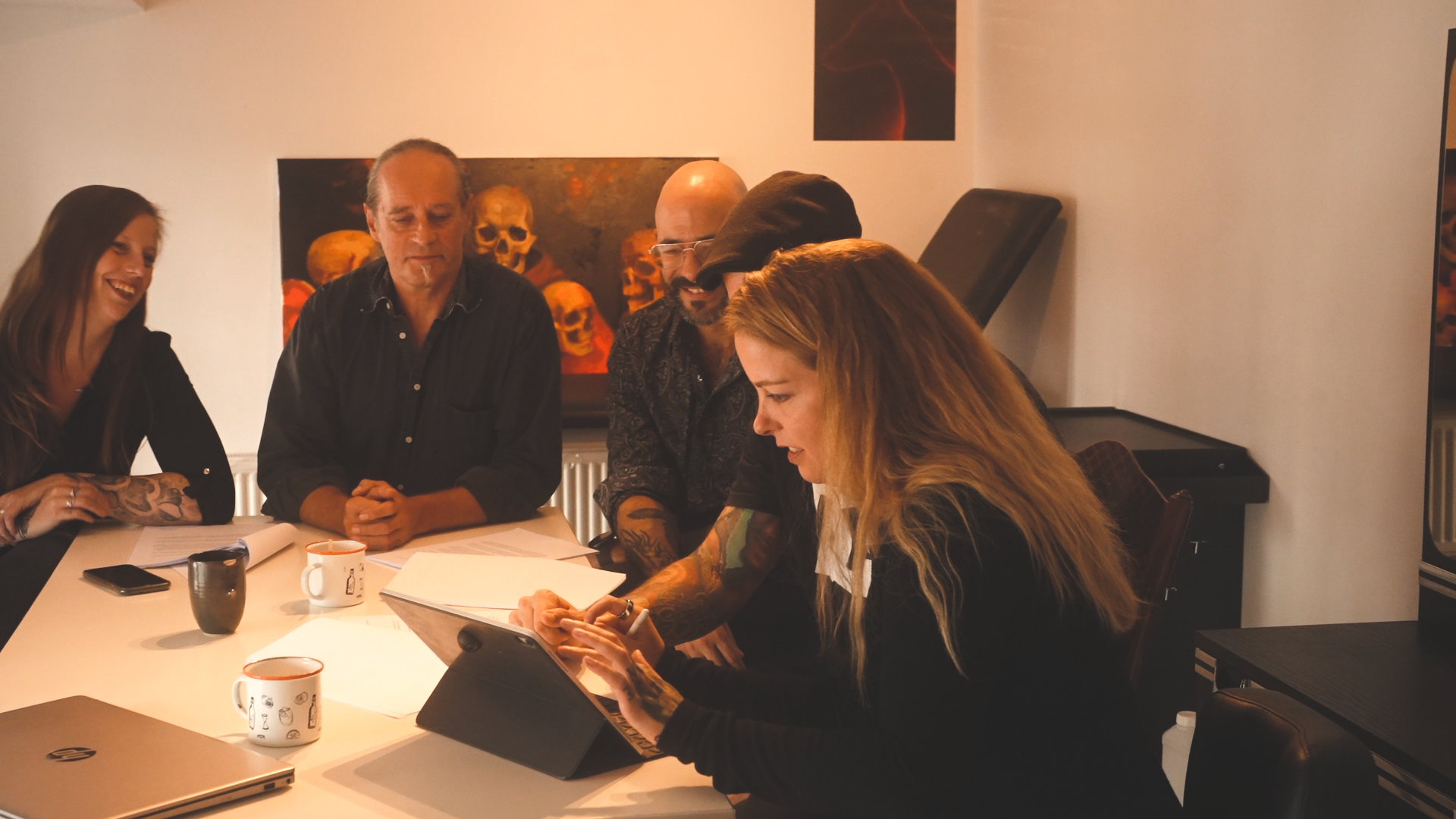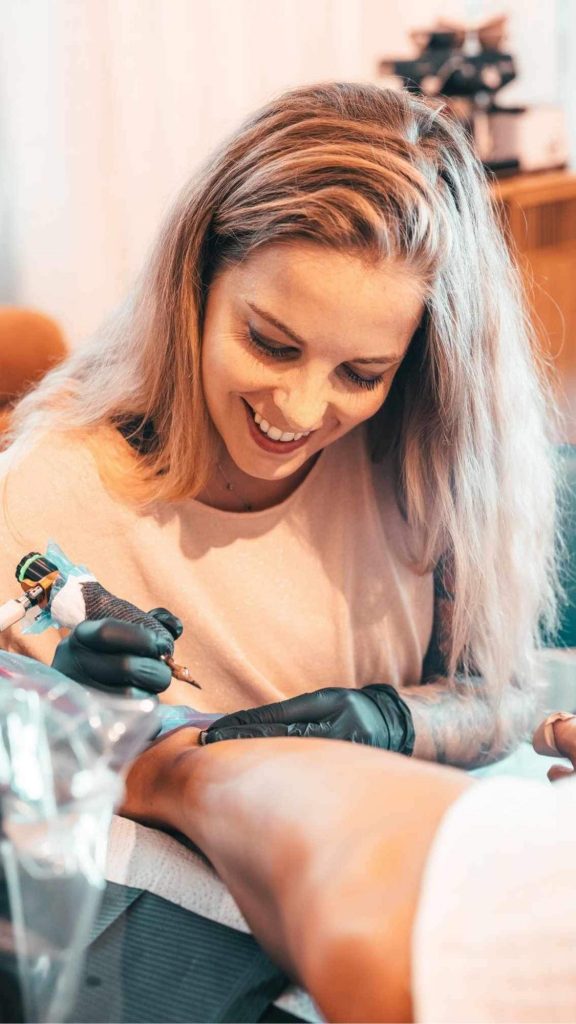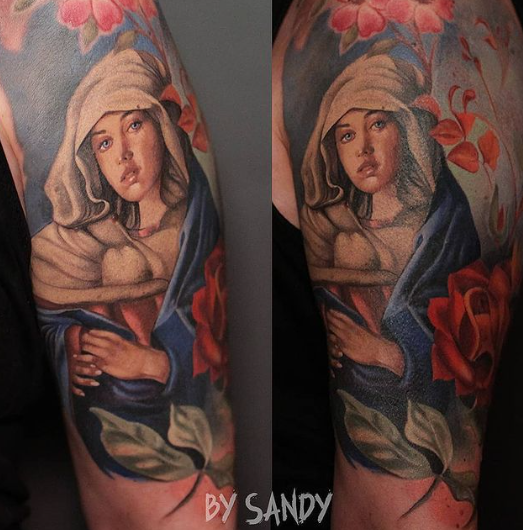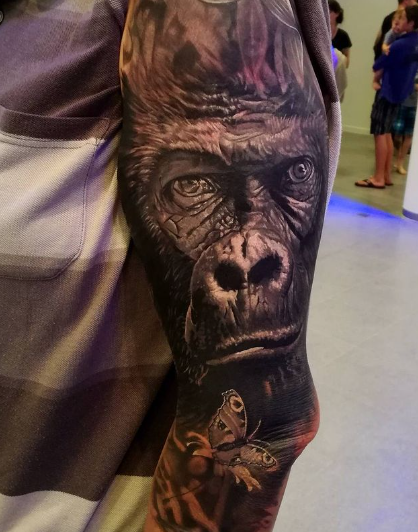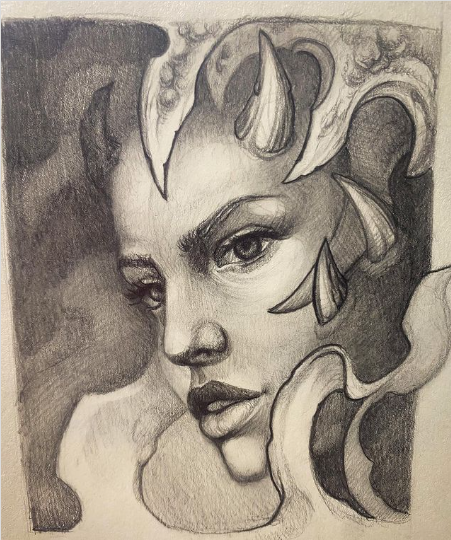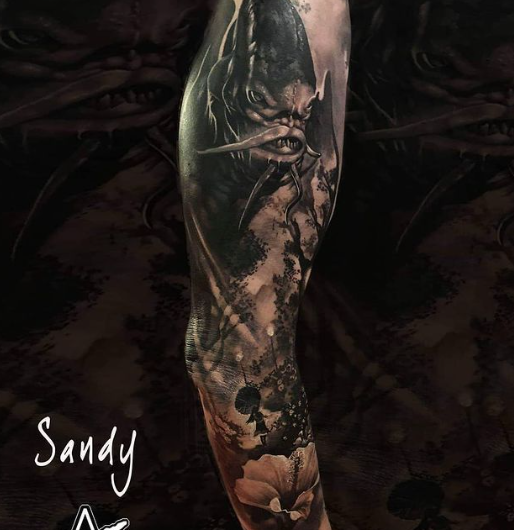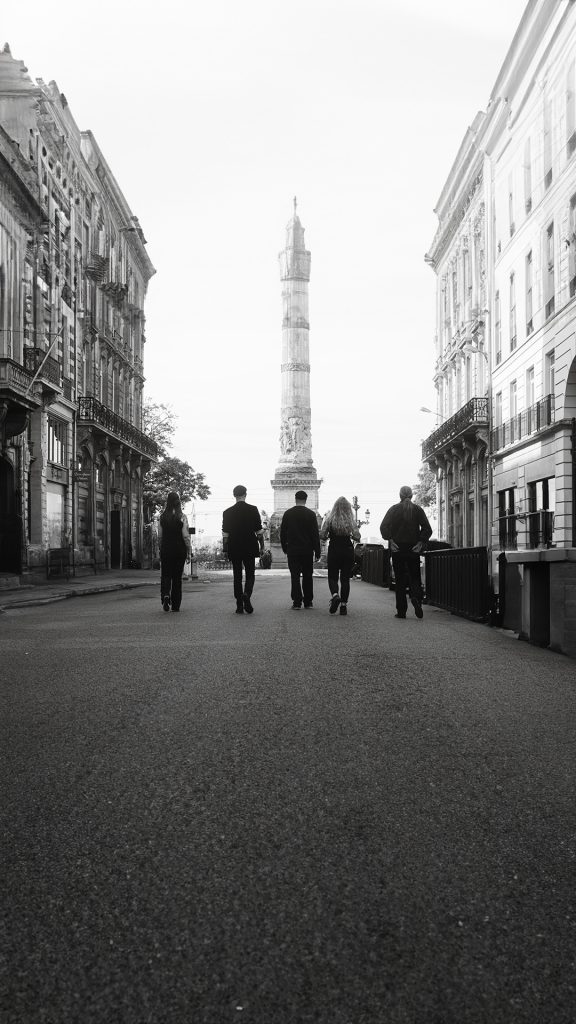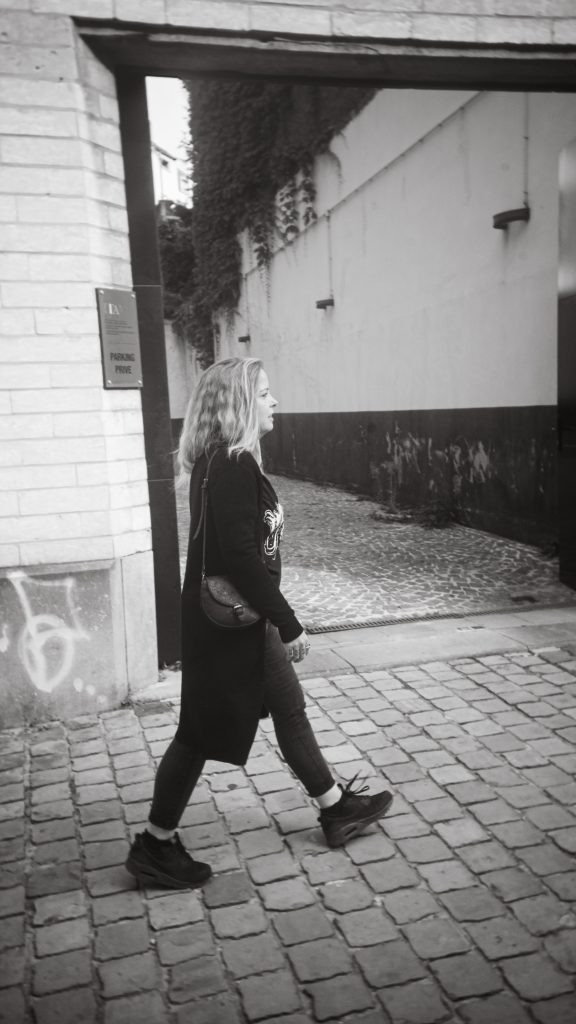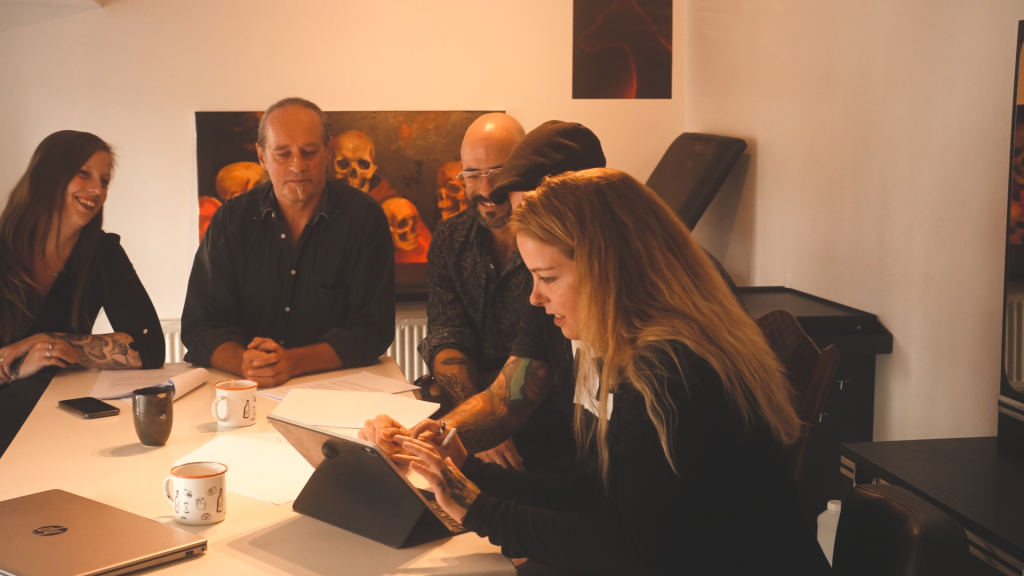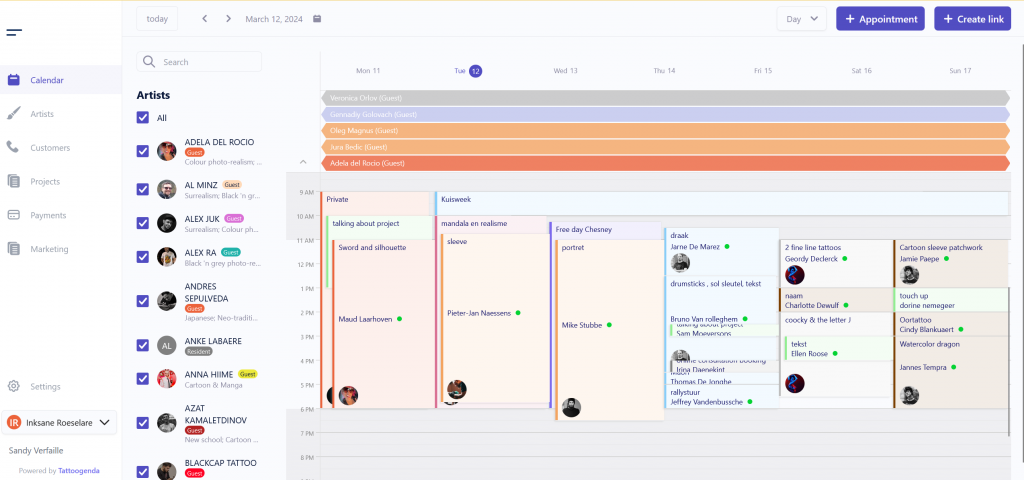We met India selling super-cute toys on her stand at Brighton Tattoo Convention back in February – we were immediately obsessed. Covered in tattoos – of course – she was selling nostalgic toys that spoke to our soul – think Beauty & The Beast-themed Polly Pocket compacts and creepy dolls; all sold under the brand name: Jeepers Squeakers Ltd. India is based in East Sussex and sells her 80s and 90s toys on Etsy. We sat down for a chat to find out a bit more about her toys and tattoos…
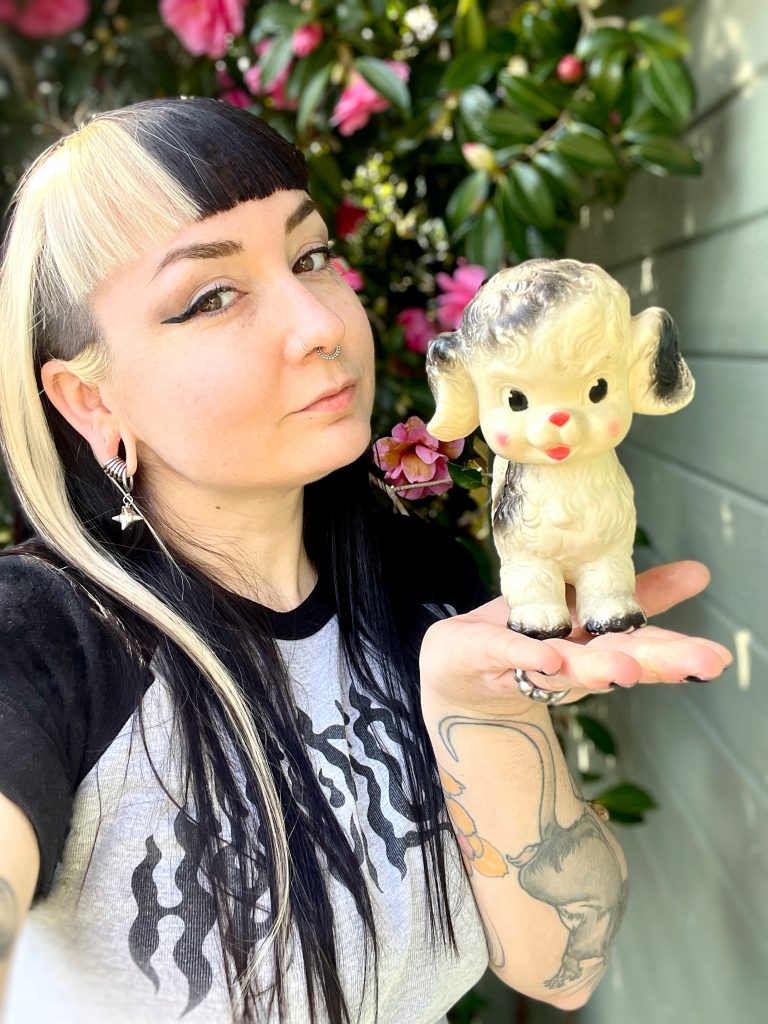
Tell us a little bit about yourself…
I’m a bit of a hermit and live in the woods with my partner, our dogs, pet turkeys and chickens. I spend my days in my workshop, essentially playing with toys from my childhood and I can’t quite believe it – but I get to call it a job and I bloody love it. Jeepers Squeakers sells vintage toys and collectibles and I focus on 80s and 90s toys, as well as squeak toys from the 60s.
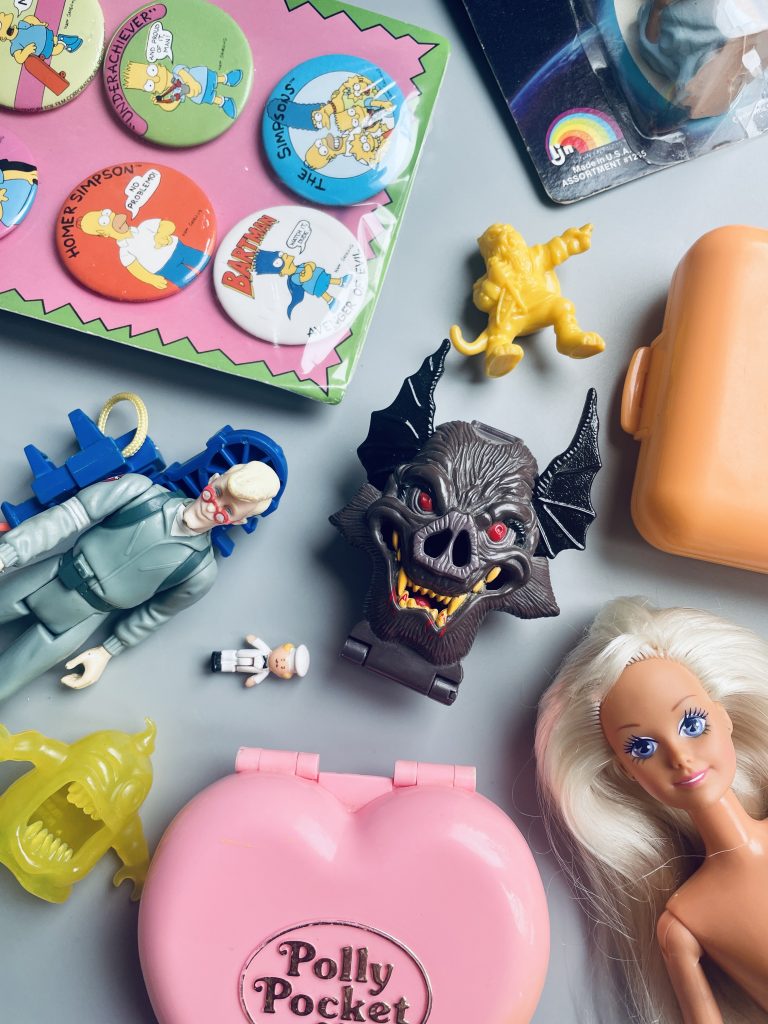
What kind of child were you? Did you always love toys?
I was always an animal nut, I loved any animal based toys – especially My Little Ponies (G1s, obviously), Puppy In My Pockets, plushies etc. Being a 90s kid, I went through all the crazes of stickers, Pokemon Cards, Pogs, Tamagotchis etc.
I wasn’t super into imaginative play as a kid, but oh boy did I like learning the different Puppy In My Pocket breeds and making my My Little Ponies look good. I’ve got a vivid memory of washing my ponies’ hair – I was in the bathroom using shampoo and probably talking them through their hair treatments when my mum caught me, gave me a strange look and asked me what I was up to.
Here I am almost 30 years later giving My Little Ponies spa days for a living.
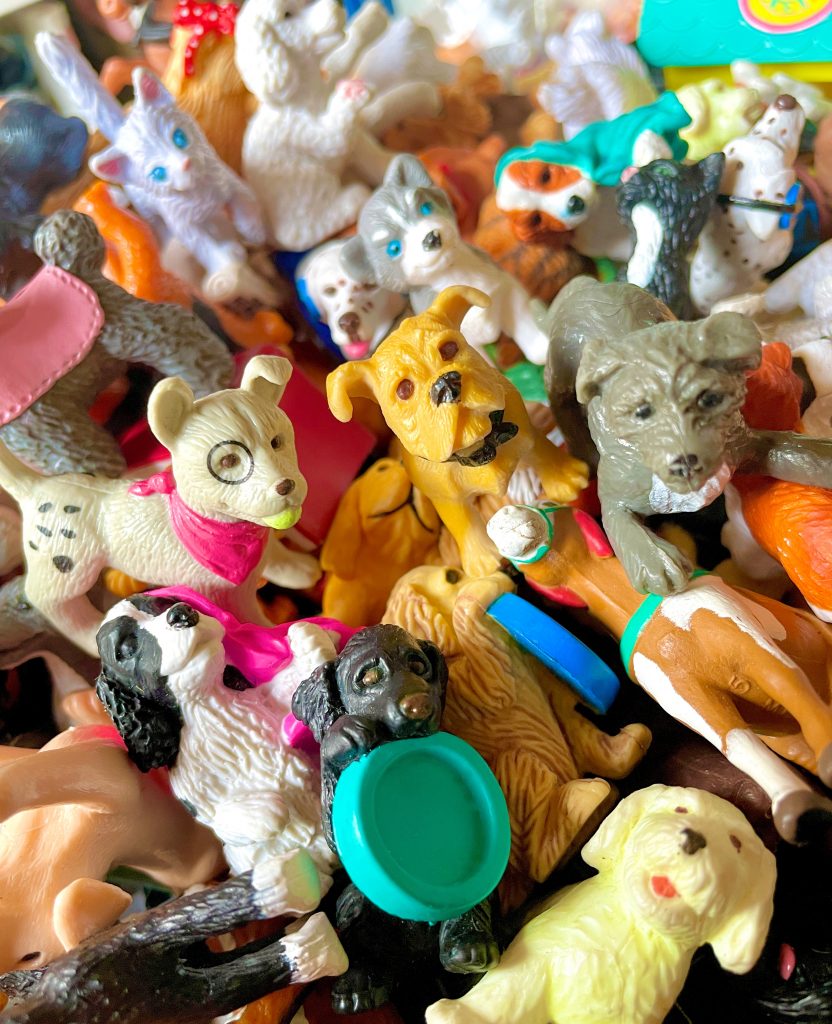
What made you fall in love with tattoos? Do you remember a moment? Take us there…
My dad showed me The Prodigy’s video for Firestarter when I was about seven. I didn’t know whether to shit my pants or scream with excitement, but it lit something inside of me. While I don’t think there are obvious tattoos in the video, I saw a Keith Flint manically dancing with his iconic hair and septum ring and it fascinated me.
From that, I started taking more of an interest in the “darker” side of life and fashion, I guess with tattoos just being a part of it. So that, along with being an art kid and drawing all over myself until teachers repeatedly told me I’d get ink poisoning (did that ever really happen?) doesn’t surprise me I ended up loving tattoos.
Cute pictures on your skin forever? Sign me up!
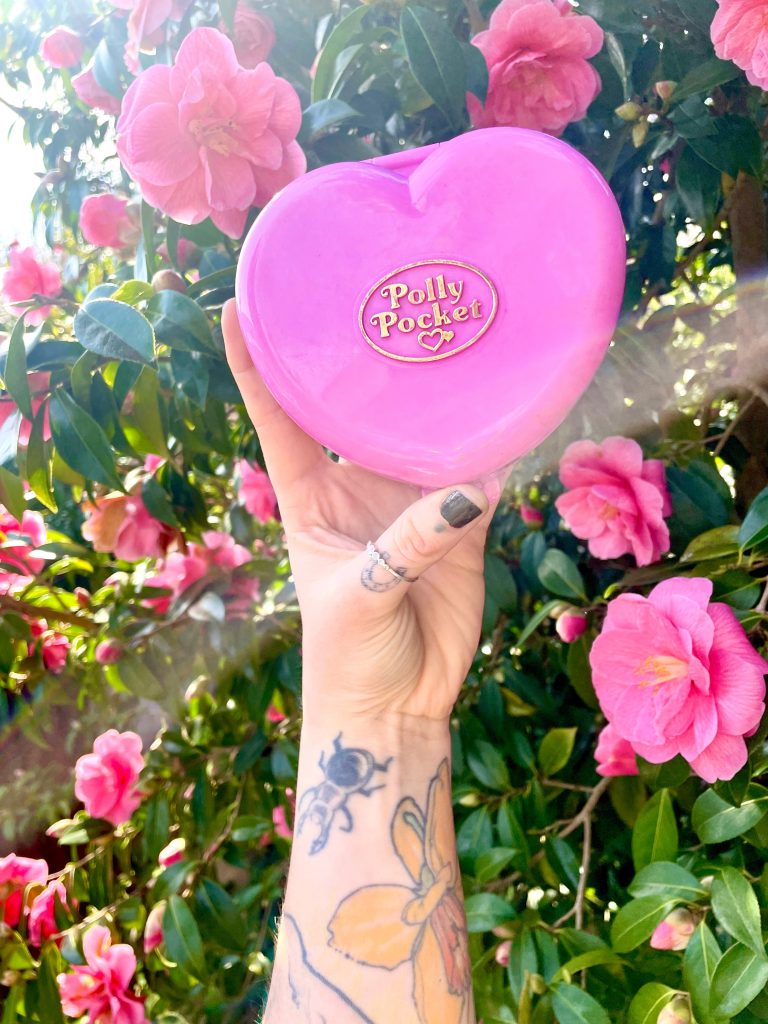
When did you get your first tattoo? Tell us a bit about your tattoo journey up until now… any fave tattoos? Artists?
Three days after my 18th birthday I got my first tattoo. I got a teeny lady bird on my wrist. I was then getting tattooed fairly regularly for around the next 10 years. I’ve got my fair share of stupid inside jokes, tattoos from friends learning to tattoo etc – they’re not always technically the “best”, but they are some of my favourites.
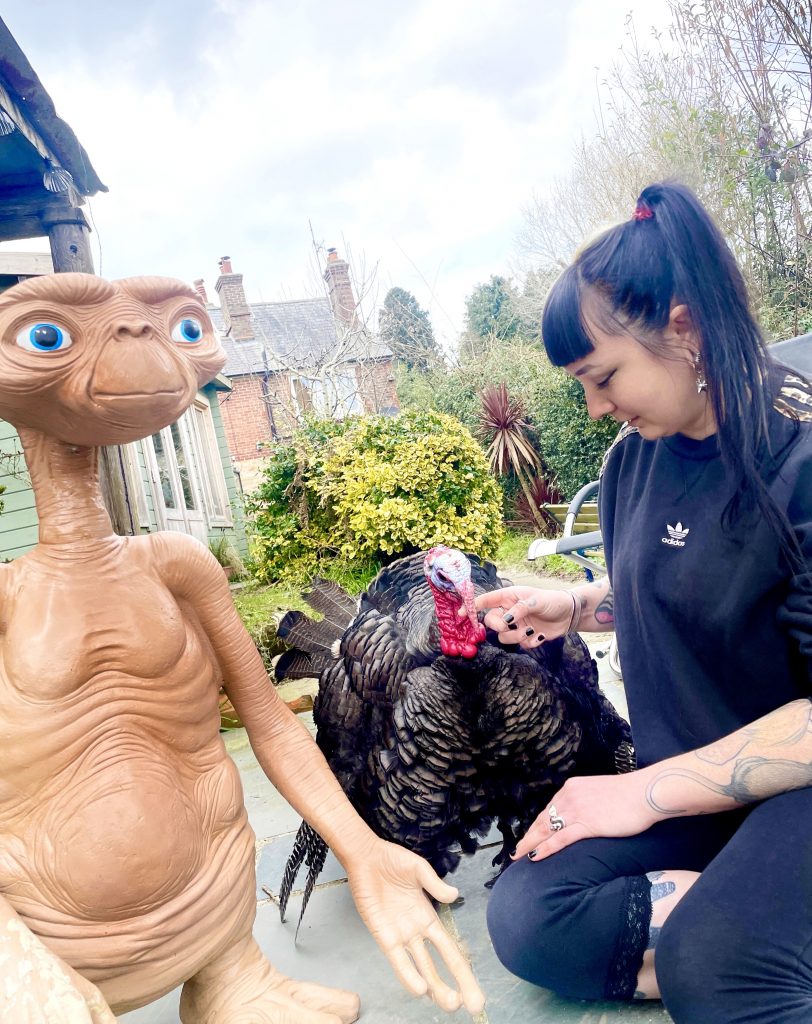
Saying that, I do sometimes wish I’d planned things out better and waited until I was a bit older to decide what I wanted. I didn’t hesitate to slap things on back in the day. I’ve loved seeing the change in the tattoo industry since the 2000s – like a lot of us (before the Instagram explosion), my first few tattoos were from the local tattoo shop, I went there because it was what I knew.
Obviously there’s still absolutely a place for that, but being able to discover so many incredible artists online with such a variation of styles is just magic (though it does make it harder to choose what I want!).
One of my favourite artists is @KateSelkie – I’ve got part of my arm and shoulder done by them: daffodils and various creatures, including an ode to my heart pony from childhood. I just love their illustrative but realistic and anatomically perfect style. I can’t wait to go back to finish things up and inevitably start on more.
When and why did you set up Jeepers Squeakers? What’s the reaction been like? How do you source toys?
I set Jeepers Squeakers up a few years ago, initially just to sell off a few squeak toys from my collection. My favourite squeak toys are usually in the US, so I’d purchased a big lot, knowing I couldn’t keep them all. I popped a few of them online and they sold quickly, showing me there was a market for them.
With my previous business experience, knowledge on import and export and passion for nostalgic toys, I knew it was something I could at least have a go at. I’m a dog with a bone when I get my teeth into something, so I threw myself into it and then added toys from the 80s and 90s too. It then snowballed and became my full-time job.
It’s super fun getting all the toys I both did and didn’t have but wanted as a kid. I didn’t expect to meet so many lovely people out of it, and to hear how much toys mean to other people. These old plastic “friends” were big parts of our small lives. They really meant a lot to us back then, and they still can now – reconnecting with these fun things from our childhoods can bring a little nostalgic magic back into our lives and be quite healing. It’s a connection to our past, our families and simpler times (I’m a sentimental fool if you can’t tell).
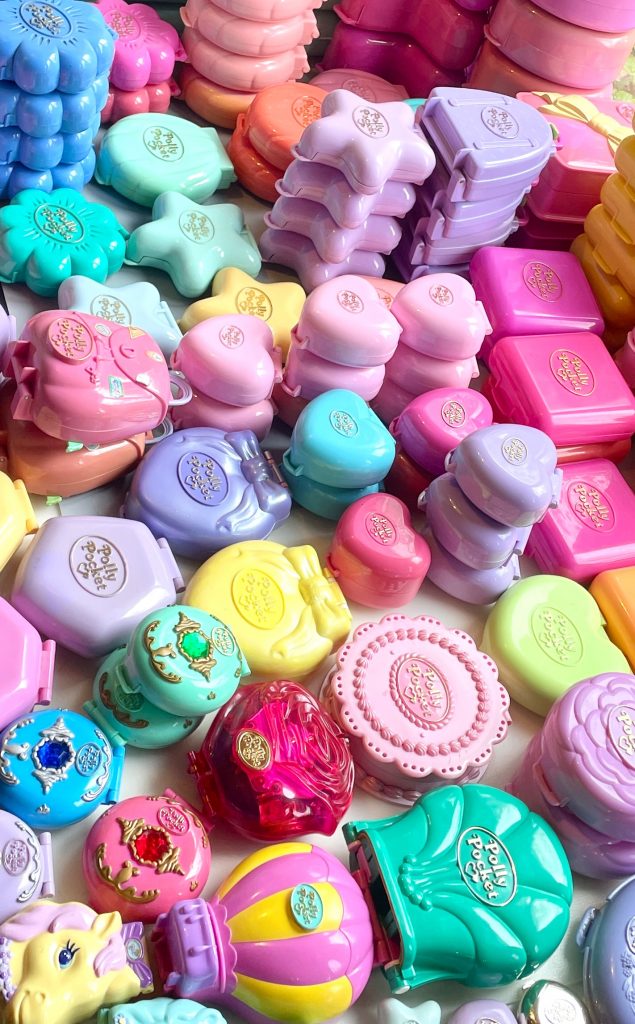
I had a fun full circle moment with a customer recently who was re-buying toys she had as a kid, when she realised one of the items I had was the ACTUAL specific set she had as a child. It used to belong to her as she recognised the writing on the tag!
Sourcing is the toughest part of my job (with cleaning being the grossest), and there’s no way around it – I’ve had to invest a lot in both time and money, it is hard work. Obviously, I’m limited with stock and it’s a long game too – I’ve got hundreds of Polly Pocket dolls and hundreds of the compacts/play sets, but that doesn’t mean they’ll go together. I buy in large quantities when I see bulk lots in auctions and have built up various contacts here and overseas, so it’s quite sporadic.
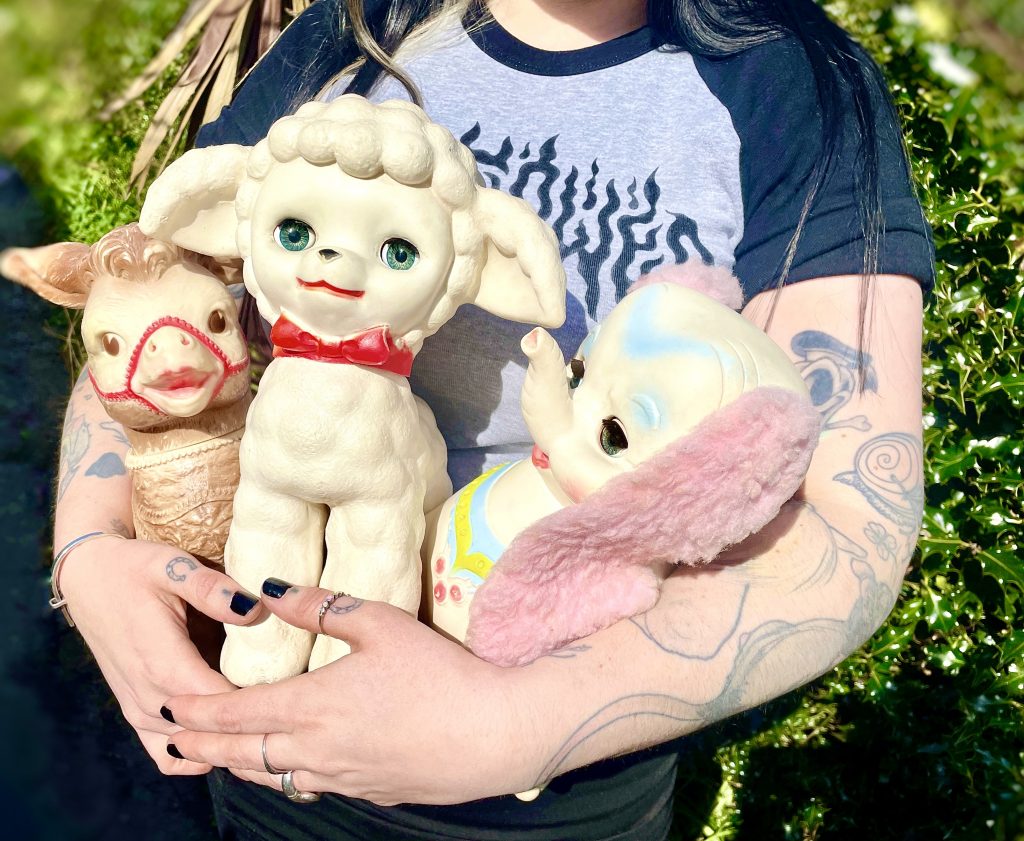
What did you love most about selling at Brighton Tattoo Convention this year?
It’s such a lovely crowd at Brighton Tattoo Con, and an all-round great event with a super lovely atmosphere. I LOVE seeing people light up when they see toys that they haven’t seen for 30 years.
People end up apologising for being overexcited and squealing at things – there’s really no need to apologise, I love it! Scream about it and I’ll probably scream with you.
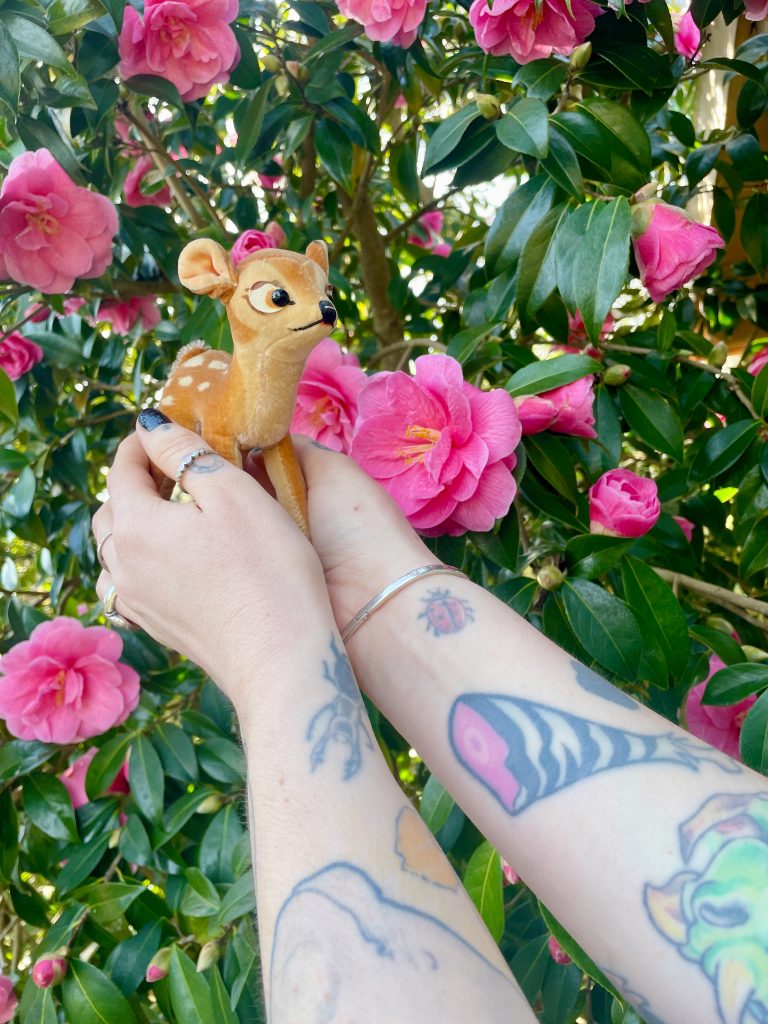
What’s next for Jeepers Squeakers?
We’ve just built a second workshop in the garden for more storage – and it’s already almost full! So I’m just trying to keep on keeping on with it, hoping to attend some more in-person events and I plan on starting to bring in some 2000s toys this year too. I truly love what I do and feel super fortunate – I’ll do it for as long as I can, that’s for sure.
Tell us a bit about the creepy doll you can’t re-home?
She’s a weird one that I have no information on. But sometimes that’s the best! I have so many questions, who made it? Why? Was it made for a child and was it meant to be cute, or was it meant to look like something out of a nightmare? Is she haunted? There’s not a lot I can tell you about her other than she’s questionable and I’ll be a little sad when she finds a home.
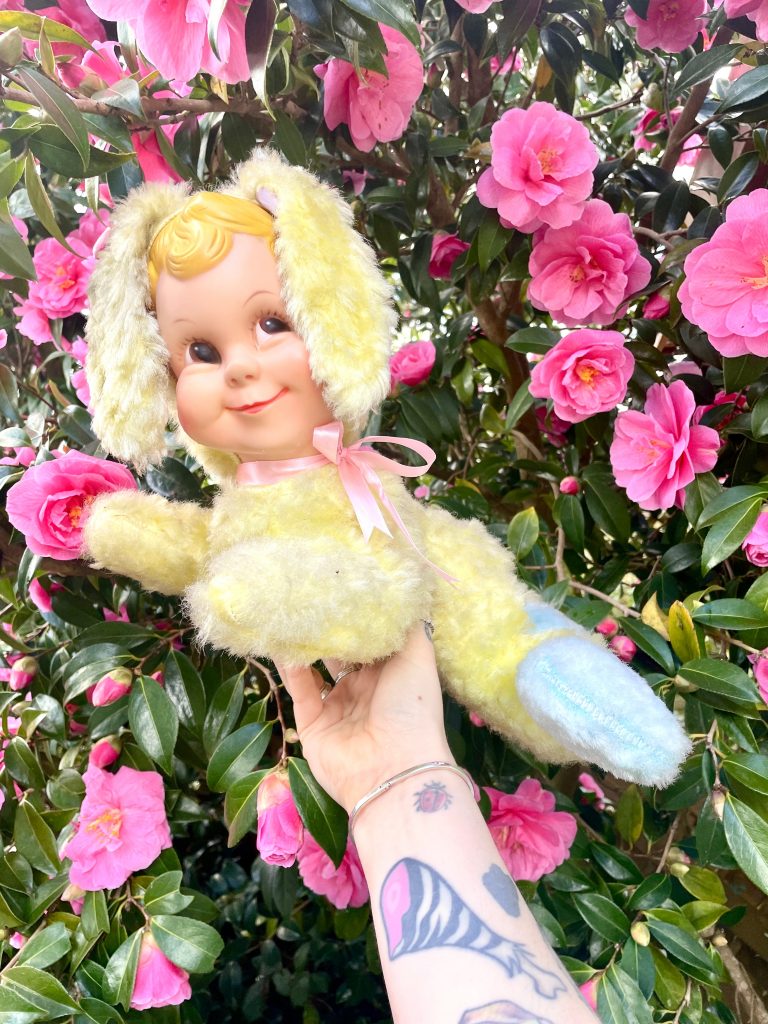
What’s the next stop on your tattoo journey? Anyone you’d love to get tattooed by?
I haven’t been tattooed since before Covid… I’ve really got to change that! I feel like I need an MOT, some touch-ups, some small bits and to finish some pieces before starting new ones. I’m keen to finish my arm with Kate, who I mentioned earlier, and I need to finish a sweet lobster on my leg with @tobyrocketattoo. After that I think I’ll move on to getting my hands/fingers done – for which I keep going back to look at @leahstanmore‘s work – I love those perfect lines.
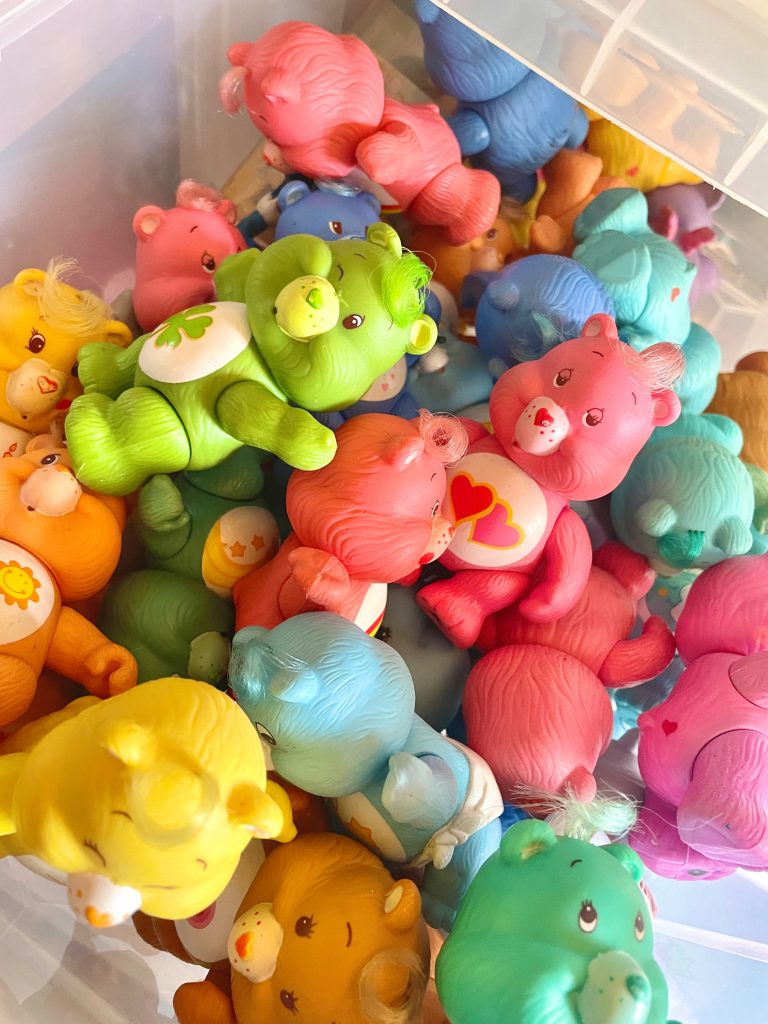
Do you think there’s something about tattoo collectors loving toys and weird stuff? Is there a link?
I do! I’m not sure what it is. Maybe those of us that get tattoos are more open and expressive, and therefore more open to collecting things both on our bodies and in our homes? There seems a bit of a connection with toys in the tattoo world – whether it’s tattooed kewpies, nostalgic tattoos or artists decorating their stations. Whatever it is, we’re all just big kids at heart chasing the high of nostalgia and I love seeing that come out of people.
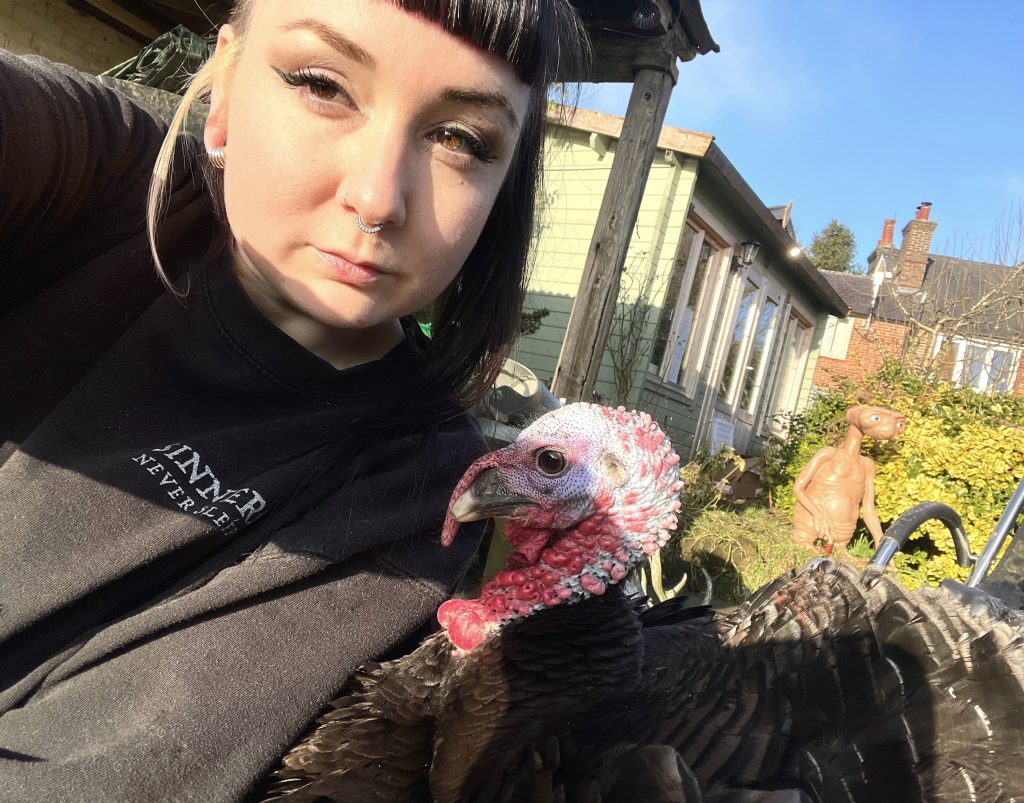
I really think we need to just do what makes us happy and not take our short lives too seriously, or think we need perfectly aesthetic “adult” homes. If that treasured Furby from your childhood still brings you joy, then put him on your shelf in pride of place – even if he doesn’t match your colour scheme (but RIP to you if he starts talking in the night again).
PS 20% off full online prices when you message India and mention THINGS AND INK! *Terms apply.
Wahey, thanks so much India, we loved chatting, happy shopping Things & Inkers: https://www.instagram.com/jeeperssqueakersvintage
